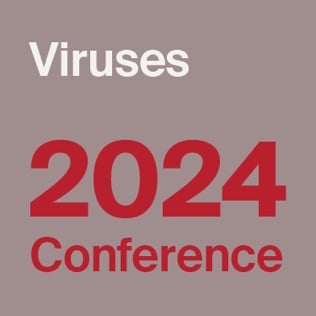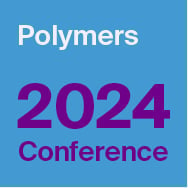
Journal Menu
► ▼ Journal Menu-
- Bioengineering Home
- Aims & Scope
- Editorial Board
- Reviewer Board
- Topical Advisory Panel
- Instructions for Authors
- Special Issues
- Topics
- Sections & Collections
- Article Processing Charge
- Indexing & Archiving
- Editor’s Choice Articles
- Most Cited & Viewed
- Journal Statistics
- Journal History
- Journal Awards
- Conferences
- Editorial Office
Journal Browser
► ▼ Journal BrowserNeed Help?
Announcements
15 April 2024
Meet Us at the 12th World Biomaterials Congress (WBC 2024), 26–31 May 2024, Daegu, Korea

MDPI will attend the 12th World Biomaterials Congress (WBC 2024) as an exhibitor. We invite researchers from different backgrounds to visit and share their latest ideas with us.
The WBC is a large-scale academic conference supported by the IUSBSE, a global association in the field of biomaterials. The 12th World Biomaterials Congress will attract more than 4,000 participants from all over the world. Participating experts can gather and share the latest information and knowledge in the diverse areas within biomaterials research.
The following MDPI journals will be represented at the conference:
- Bioengineering;
- International Journal of Molecular Sciences;
- Journal of Functional Biomaterials;
- Applied Biosciences;
- Journal of Cardiovascular Development and Disease;
- Materials;
- Current Issues in Molecular Biology;
- Cosmetics;
- Fibers;
- Metals.
If you are planning to attend the above conference, please do not hesitate to start an online conversation with us. Our delegates look forward to meeting you in person and answering any questions you may have. For more information about the conference, please visit the following website: https://www.wbc2024.com/.
7 April 2024
Meet Us at the 28th International Conference on Miniaturized Systems for Chemistry and Life Sciences—Micro-Total Analysis Systems (µTAS 2024), 13–17 October 2024, Montréal, Canada

MDPI will be attending the 28th International Conference on Miniaturized Systems for Chemistry and Life Sciences—Micro-Total Analysis Systems (µTAS 2024) held in Montréal, Canada, from 13 to 17 October 2024.
The µTAS International Conference series is the premier forum for reporting research results in microfluidics, lab-on-a-chip, organ-on-a-chip, wearables, BioMEMS, microfabrication, 3D printing, nanotechnology, integration, materials and surfaces, analysis and synthesis, and detection technologies for chemistry, life sciences, and biomedicine. µTAS 2024 will feature plenary and keynote talks from world luminaries and will offer an opportunity for students and scientists to deliver oral and poster presentations selected from submitted abstracts to a global audience of experts in their area. µTAS 2024 will also include networking and social session for students, minorities, young faculty, and an array of industry exhibitions and presentations, as well as a wonderful cultural experience in Montréal.
During this conference, MDPI will welcome researchers from different backgrounds to visit and share their latest views and research with us.
The following MDPI journals will be represented:
- Micromachines;
- Applied Sciences;
- Bioengineering;
- Fibers;
- Molecules;
- JLPEA;
- Technologies;
- Chemosensors;
- Biosensors.
If you plan on attending this conference, feel free to stop by our booth at #50. Our delegates look forward to meeting you in person to answer any questions you may have.
For more information about the conference, please see the following link: https://microtas2024.org/.
2 April 2024
MDPI Insights: The CEO's Letter #10 - South Korea, IWD, U2A, Japan

Welcome to the MDPI Insights: The CEO's Letter.
In these monthly letters, I will showcase two key aspects of our work at MDPI: our commitment to empowering researchers and our determination to facilitating open scientific exchange.
Opening Thoughts

Left to right: Dr. Jisuk Kang (Scientific Officer, MDPI), Stefan Tochev (CEO, MDPI), and Dr. Giulia Stefenelli (Chair of Scientific Office Board, MDPI), during media meetings at Prain Agency office in Seoul, South Korea.
Visit to Seoul, South Korea
During my recent visit to South Korea, I had the privilege of meeting various stakeholders, including representatives of government, research institutions, and academia, to understand their needs and communicate MDPI’s commitment to accessible science. Accompanied by my colleagues Dr. Giulia Stefenelli and Dr. Jisuk Kang, I engaged with the Korean scientific community, which is increasingly embracing open access (OA).
As the leading OA publisher in South Korea, MDPI is trusted by local authors and in 2023 enjoyed an approximately 30% share of the OA market. South Korea ranks sixth globally for MDPI in terms of research papers submitted and published.
MDPI and South Korea by Numbers
As at 30 March, over 76,000 MDPI articles have been authored by individuals affiliated with Korean institutions. We have over 1,800 active editorial board members (EBMs) from South Korea, with more than 880 EBMs having an H-index between 26 and 50, including 10 serving as Chief Editors.
“South Korea is the sixth-largest contributor to our total publications”
Over the past five years (2019–2023), nearly 120,000 authors affiliated with South Korean institutes have published with MDPI. Specifically in 2023, we received approximately 25,000 submissions from South Korean authors, publishing close to 13,000 articles, resulting in a rejection rate of 47.4%, which is not far below MDPI’s overall rejection rate of 56.4% in 2023.
Institutional Partnerships with South Korea
I am pleased to share that MDPI has more than 825 institutional partnerships worldwide, with 12 in South Korea, including Kyunghee University, Chung-Ang University, and Inha University, among others.

Left to right: Dr. Jisuk Kang (Scientific Officer, MDPI), Dr. Giulia Stefenelli (Chair of Scientific Office Board, MDPI), and Stefan Tochev (CEO, MDPI) fielding media questions at Prain PR Agency office in Seoul, South Korea.
Over the past three years (2021–2023), we have had some of the most prestigious academic universities ranked among the top 10 Korean institutions publishing with MDPI. Seoul National University had the highest number of publications with MDPI during those three years, publishing nearly 6,000 papers. Universities such as Korea University and Yonsei University also rank among the top 10 Korean institutions publishing with MDPI.
MDPI Hosts Seminar for Academia and Media
As the world’s leading OA publisher, MDPI is actively democratizing science. This is reflected in the seminars we hosted on 21 March to address questions about our editorial processes and ethical standards. The visit garnered media coverage, reflecting our mission to providing high-quality services and fostering open dialogue in the community.
“MDPI is actively democratizing science”
MDPI in the News

Stefan Tochev (CEO, MDPI) leading a seminar on OA and MDPI at Prain PR Agency office in Seoul, South Korea.
Media coverage generated by our visit to Seoul included the following stories:
“Open access is an unstoppable trend…it will lead the development of the knowledge ecosystem.”
I greatly appreciate the contributions of everyone who took the time to meet with us, share their stories, and hold us accountable for continuing to provide high-quality publishing services while identifying areas for improvement. I am also excited to announce that we have opened an MDPI office in Seoul and will release a press release on MDPI.com, with details, by the end April 2024. The purpose of the office is to establish a local presence to connect with and support the South Korean academic community through institutional partnerships, conferences, author workshops, stakeholder communications, and more.
Impactful Research

Featured Articles on Women’s Leadership and Healthcare
In celebration of International Women’s Day (8 March 2024), MDPI curated a collection of research articles on various topics, including women’s leadership, reproductive health, preventive healthcare, and a selection of articles from our journal Women.
Women’s Leadership
- Women Entrepreneurship and Sustainable Development: Bibliometric Analysis and Emerging Research Trends
Sustainability 2022, 14, 9160. https://doi.org/10.3390/su14159160 - Refugee Women Business Mentors: New Evidence for Women’s Empowerment
Sustainability 2022, 14, 9154. https://doi.org/10.3390/su14159154 - Women and Leadership in Higher Education: A Systematic Review
Soc. Sci. 2023, 12, 555. https://doi.org/10.3390/socsci12100555 - Understanding Needs and Potentials for Gender-Balanced Empowerment and Leadership in Climate Change Adaptation and Mitigation in Africa
Sustainability 2022, 14, 9410. https://doi.org/10.3390/su14159410 - Challenges Women Experience in Leadership Careers: An Integrative Review
Merits 2023, 3, 366-389. https://doi.org/10.3390/merits3020021
Women’s Reproductive Health
- Recreational Female Athletes’ Understanding of and Perceived Impact of the Menstrual Cycle on Physical Performance, Mood, and Sleeping Behaviour
Women 2023, 3, 445-456. https://doi.org/10.3390/women3030034 - Difficulties in Adaptation of the Mother and Newborn via Cesarean Section versus Natural Birth—A Narrative Review
Life 2023, 13, 300. https://doi.org/10.3390/life13020300 - The Main Theories on the Pathogenesis of Endometriosis
Int. J. Mol. Sci. 2023, 24, 4254. https://doi.org/10.3390/ijms24054254
Women’s Preventive Healthcare
- Insulin Metabolism in Polycystic Ovary Syndrome: Secretion, Signaling, and Clearance
Int. J. Mol. Sci. 2023, 24, 3140. https://doi.org/10.3390/ijms24043140 - Assessing Barriers Encountered by Women in Cervical Cancer Screening and Follow-Up Care in Urban Bolivia, Cochabamba
Healthcare 2022, 10, 1604. https://doi.org/10.3390/healthcare10091604 - Updates on HPV Vaccination
Diagnostics 2023, 13, 243. https://doi.org/10.3390/diagnostics13020243
Featured Articles in MDPI Journal Women
Below are a few articles from Women, our journal focused on women’s health, the social determinants of health, and the healthcare system that serves women. The aim of Women is to encourage academics to publish their experimental and theoretical results in detail, to aid reproducibility, and in an engaging style, to aid comprehensibility.
- Premenstrual Syndrome and Exercise: A Narrative Review
Women 2023, 3, 348-364. https://doi.org/10.3390/women3020026 - Increasing Awareness of the Human Papillomavirus (HPV) Vaccine for Women 18–45 Years of Age
Women 2023, 3, 365-373. https://doi.org/10.3390/women3030027 - Addressing Women’s Needs with Human Immunodeficiency Virus (HIV) and Enhancing the Visibility of Pharmacists in the Public Health Arena
Women 2022, 2, 346-352. https://doi.org/10.3390/women2040032
Inside MDPI

Championing Women’s Healthcare and Access to Healthcare Information
MDPI colleagues from our offices joined in celebrating #IWD2024. In doing so, we emphasized key missions that encompass:
- Empowering women to assume leadership and decision-making roles in both business and science.
- Helping women and girls make informed decisions about their health.
- Recruiting and developing female talent and fostering inclusive workplace environments.
“We are thrilled to recognize the accomplishments of women scientists”
I am proud to see our colleagues enthusiastically supporting the International Women’s Day call to ‘Inspire Inclusion!’ The heart-hands in the collage below symbolize our appreciation of the achievements of women researchers and the recognition of the trailblazers who have courageously made a mark on societies past and present.
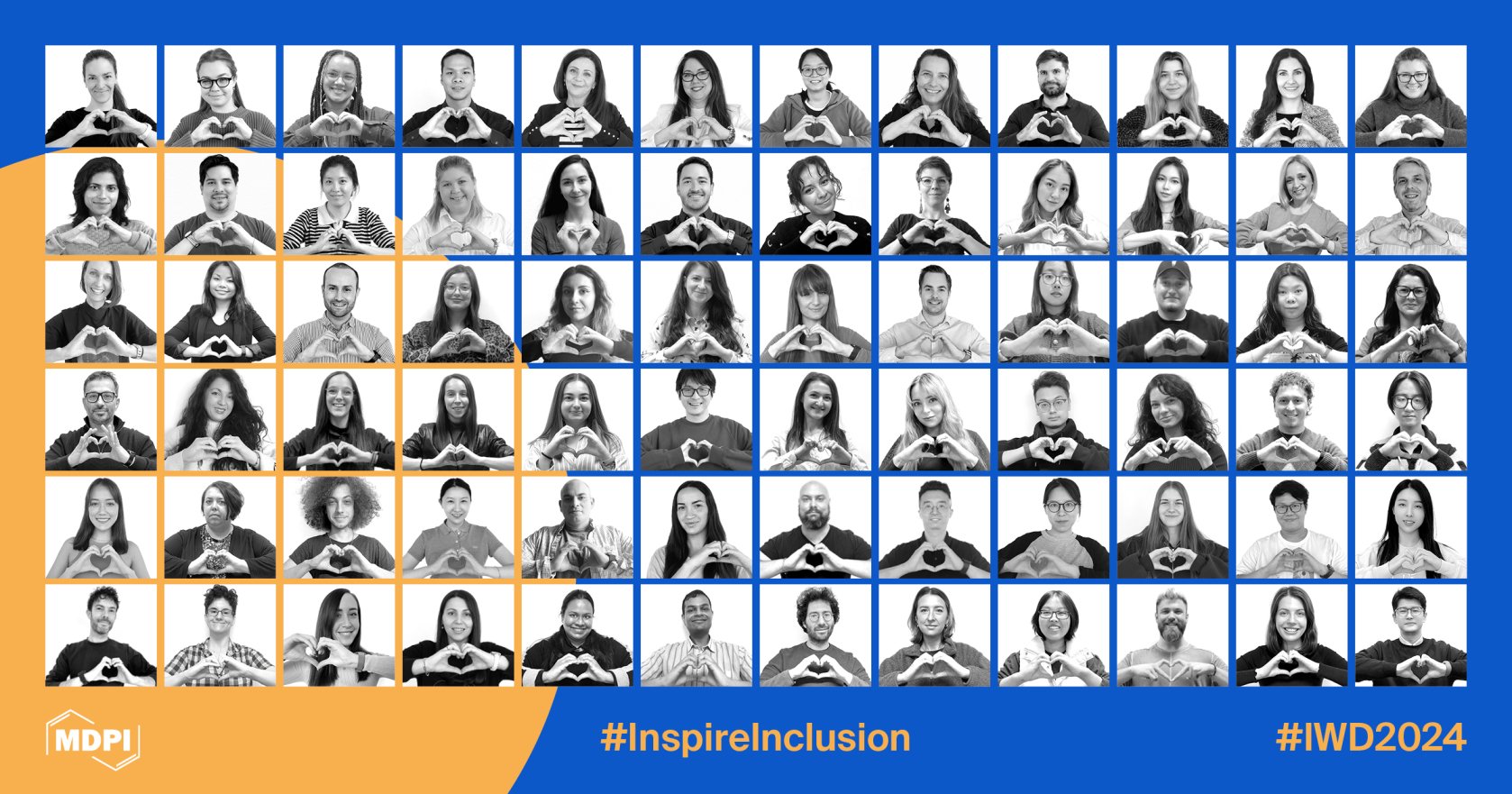
We are thrilled to recognize the accomplishments of women scientists through our many MDPI awards and by highlighting success stories. As inspirational figures, female scientists are paving the way for the next generation of women aspiring to pursue careers in engineering, life sciences, computing, and various other STEM fields.
“I consider myself lucky because I work with incredibly talented women who inspire me every day.”
– Dr. Alessandra Pasut, Winner of MDPI's ‘Biology 2023 Young Investigator Award’
“It’s really important to find a supportive and enabling environment in which to do your science; it would have a big impact on you as a person and on your scientific outputs.”
– Dr. Rhea Longley, Winner of the ‘Pathogens 2023 Young Investigator Award’
Open-access publishing, in particular, allows early-career women researchers to share their work more widely, potentially attracting mentorship opportunities and collaborations. This support is crucial for career development and advancement.
Coming Together for Science

MDPI Joins United2Act in Collective Fight to Stop Paper Mills
In my February 2024 CEO Letter, I highlighted some of our recent initiatives aimed at bolstering our commitment to research integrity, including joining the STM Integrity Hub and expanding our Research Integrity and Publication Ethics team (RIPE). Continuing our efforts in coming together for science, I am pleased to share our participation in the United2Act initiative.
The text below is taken from our official announcement:
United2Act represents an international group of stakeholders in the publishing industry committed to addressing the collective challenge posed to research integrity by paper mills.
Scientists and academic publishers have increasingly noted the alarming proliferation of paper mills, recognized as fraudulent entities seeking to manipulate the publication process for financial profit. These entities engage in fraudulent practices such as falsifying or fabricating data, selling co-authorship of fake papers, manipulating peer review, and including inappropriate citations. These actions pose a significant threat to the integrity of the scholarly record, prompting widespread concern among those involved in the academic community.
MDPI has been actively contributing to combat the undermining of the scientific record. Our editors employ a set of tools to detect potential ethical breaches within a manuscript and to tackle the issue of fake papers.
United2Act’s consensus statement is the outcome of a virtual summit held in May 2023. It involved the participation of research bodies, publishers, researchers/sleuths, universities, and publishing infrastructure from 15 countries and resulted in a Consensus Statement outlining five key areas of action for all stakeholders:
- Education and awareness
- Improve post-publication corrections
- Facilitate and organise research on paper mills
- Enable the development of trust markers
- Facilitate dialogue between stakeholders
MDPI is committed to promoting transparency and integrity in scholarly publishing and is continuing to work closely with the scientific community toward this goal.
Closing Thoughts

Left to right: Ryo Hirayama (Marketing Specialist, MDPI), Takashi Sasabe (Marketing Specialist, MDPI), Dr. Giulia Stefenelli (Chair of Scientific Office Board, MDPI), Dr. Izumi Yamamoto (Marketing Manager, MDPI), and Stefan Tochev (CEO, MDPI), at MDPI’s office in Tokyo, Japan.
Visit to Tokyo and Kyoto, Japan
In March, I had the opportunity to visit our Tokyo office and engage with stakeholders in Tokyo and Kyoto. During the visit, I also recorded a video message to welcome Japanese scholars working with MDPI and to highlight our operations in Japan.
We held meetings with Editors-in-Chief, librarians, scholars, and external consultants to gather feedback on our efforts to enhance our reputation and explore additional steps we can take in that direction. Japan's rich cultural heritage, characterized by tradition, respect, and formality, provided valuable insights into meeting the publishing needs specific to Japan.
Japan’s Open Access statistics
Over the years, we have seen a shift from subscription-only to gold OA publishing in Japan, despite the lack of an official mandate. Here are some statistics:
- 2012: 68% of articles were subscription-only, 6% were green Open Access, and 8% were gold Open Access.
- 2016: 55% of articles were subscription-only, 6% were green Open Access, and 20% were gold Open Access.
- 2022: 43% of articles were subscription-only, 7% were green Open Access, and 39% were gold Open Access.
To learn more about the history of OA in Japan as well as about future trends, please read this blog post.
“Japan is the ninth-largest contributor to our total publications”

Left to right: Stefan Tochev (CEO, MDPI), Dr. Izumi Yamamoto (Marketing Manager, MDPI), and Dr. Giulia Stefenelli (Chair of Scientific Office Board, MDPI) visiting Kyoto University in Kyoto, Japan.
MDPI and Japan by Numbers
As at 1 April, over 50,000 MDPI articles have been authored by scholars affiliated with Japanese institutions, making the country the ninth-largest contributor to our total publications. Over the past three years (2020–2023), nearly 90,000 authors affiliated with Japanese institutes have published with MDPI, and we have collaborated with over 4,600 Guest Editors from Japan.
In 2023, we published over 8,200 papers from authors associated with Japanese institutions. MDPI collaborates with 41 institutional partnerships in Japan, including the University of Tokyo, Hokkaido University, and Nagoya University. We have over 2,100 active EBMs from Japan, more than 1,050 EBMs having an H-index between 26 and 50, including 13 serving as Editors-in-Chief.
General Feedback – a side note
A general takeaway from our discussions with stakeholders from around the world is that negative perceptions of MDPI often stem from misinformation, misconceptions, or misunderstandings about MDPI and our practices. While we acknowledge our mistakes and work diligently to address them, maintaining a strong editorial procedure and robust peer-review process, I find that educating stakeholders about our how we do what we do and our ongoing improvements tends to help shift opinions.
That said, we recognize the importance of addressing individual concerns. We take feedback seriously and are continuously working to get better while not compromising the core principles that millions of authors appreciate about MDPI.
Chief Executive Officer
MDPI AG
15 March 2024
Interview with Dr. Dora Allegra Carbone, Author of a Highly Viewed Article of Bioengineering

Dr. Dora Allegra Carbone is one of the authors of the highly viewed article entitled “Potential of Porous Substrate Bioreactors for Removal of Pollutants from Wastewater Using Microalgae”, published in Bioengineering (ISSN: 2306-5354).
Dr. Dora Allegra Carbone completed her Ph.D. at the University of Federico II, Italy, in 2017, specializing in microalgal biotechnologies. During her doctoral research, she concentrated on optimizing growth systems for biomass production. This involved comparing traditional liquid bioreactors with newer solid-state systems, including the notable Twin-layer system, which she studied while conducting research at the University of Cologne, Germany. In 2018, she expanded her studies on microalgae and their growth, focusing further on immobilized systems, once again examining the Twin-layer system, also at the University of Cologne. After returning to Italy in 2019, she continued her work in algology across various areas, such as co-cultivating different organisms and treating wastewater at different institutions until 2021. Since then, she has dedicated herself to teaching and scientific outreach.
The following is an interview with Dr. Dora Allegra Carbone:
1. Could you please briefly introduce the main research content of the published paper?
The paper talks about a new technology, the Porous Substrate Bioreactors (PSBRs), which allows microalgae growth on an immobilized system and solves some problems linked to standard suspended cultivation. This technology seems to bring interesting results in wastewater treatment. This paper is the result obtained by PSBRs in this field.
2. Could you describe the difficulties and breakthrough innovations encountered in this research?
PSBRs represent an innovative technology demonstrating promising outcomes across various facets of microalgae cultivation, such as astaxanthin production. These systems have exhibited several advantages in wastewater treatment compared to classic suspended cultivation methods, including enhanced cost-effectiveness, reduced water consumption, and elevated levels of biomass productivity. Therefore, they present themselves as compelling alternatives to traditional methods in rural areas and small-scale decentralized systems within urban settings, such as hospitals. Nonetheless, a significant challenge lies in adopting these systems for large-scale applications. The scaling-up process necessitates a sustainable operation, incorporating automated algal biomass harvesting. Hence, future research should prioritize addressing these obstacles to facilitate the successful integration and utilization of PSBR technology in wastewater treatment and other biotechnology fields.
3. What made you decide to publish a bioengineering article? Why did you choose Bioengineering?
I have had previous publications with MDPI, and I have always found them to be reliable. Throughout my career, I have considered MDPI to be a top-notch publisher for research. Additionally, I have come across several bioengineering papers published by them, and they consistently exhibit high quality and are quite interesting as well. The Bioengineering journal produces valuable work which makes them trustworthy, and I would not hesitate to recommend them.
4. What was your experience publishing with Bioengineering?
My experience with this journal has been exceptional. The editorial team is truly efficient. They consistently respond promptly to my inquiries and provide helpful support whenever needed. Moreover, I have found that the time it takes for my work to be published is remarkably fast, which has been incredibly beneficial for my work.
5. How do you think open access impacts authors?
Open access increases the visibility of scientific papers without barriers; consequently, the number of citations and the impact factor significantly increase. As a result, this process amplifies the recognition of research and offers greater opportunities for young scientists to succeed in their respective fields.
6. What do you hope that readers will get from your paper?
I sincerely hope the readers recognize the PSBRS system's immense potential in wastewater treatment. Certainly, with further in-depth studies and ongoing research, this technology can significantly enhance wastewater treatment processes on both small and large scales. It promises substantial improvements in efficiency, effectiveness, and environmental sustainability. Embracing and advancing the development of PSBRS technology could prove instrumental in addressing pressing challenges in wastewater management, benefiting communities and ecosystems alike.
4 March 2024
MDPI Insights: The CEO's Letter #9 - Romania, Research Integrity, Viruses

Welcome to the MDPI Insights: The CEO's Letter.
In these monthly letters, I will showcase two key aspects of our work at MDPI: our commitment to empowering researchers and our determination to facilitating open scientific exchange.
Opening Thoughts

Reka Kovacs (Deputy Office Manager, MDPI), Stefan Tochev (CEO, MDPI), and Sandra Ana Spatariu (Office Manager, MDPI) at the MDPI office in Cluj, Romania.
MDPI’s Impact on Romania
In February, I visited our office in Cluj, Romania. I worked closely with our senior office managers and various teams, including the departments of training, marketing and conferences, as well as our journal relationship specialists, reviewing our service to the local scholarly community. During the visit, I also met with representatives from Babes-Bolyai University and the Technical University of Cluj-Napoca. Our multifunctional Romanian office plays an important role in supporting our collaborations with the local market as well as helping to meet MDPI’s overall business needs.

Feedback and strategy meeting with a group of MDPI’s Journal Relationship Specialists at the MDPI office in Cluj, Romania.
With 22,436 articles, Romania ranks as a top 20 contributing country to MDPI’s total number of papers published as at 28 February 2024. This highlights the importance of our collaboration with Romanian-affiliated authors and the growing opportunity to support their publishing needs. MDPI is one of the few academic publishers with a significant presence in Romania, boasting over 360 colleagues across our offices in Bucharest and Cluj. We are also proud to hire colleagues from local institutions to launch their careers within publishing.
Romania ranks as a top 20 contributing country.
The Numbers: 2019–2023
MDPI has seen a healthy increase in submissions from Romanian authors over the past three years, from 8,439 in 2021 to 11,866 by end of 2023, with most submissions going to journals such as Sustainability, Medicina, Diagnostics, IJMS, Applied Sciences, and JCM. From 2019 to 2023, MDPI published articles from 32,145 authors affiliated with Romanian institutions. Over those years, we have worked with Romanian Guest Editors on nearly 3,000 occasions to support their Special Issue and Topical collections.
With more than 300 Editorial Board Members from Romania, 34 appear on the board of Mathematics, 27 on Materials, 19 on Polymers, 18 on Coatings, and 16 on Molecules, while three serve as Section Editors-in-Chief (SEiC) on our journals Coatings (3.4 IF, 4.6 Citescore), Magnetochemistry (2.7 IF, 3.5 Citescore), and Chemosensors (4.2 IF, 3.9 Citescore).
Institutional Open Access Programs
Our commitment to working with institutions is evident in Romania, where we have established eight Institutional Open Access Programs (IOAP) with esteemed institutions such as the University of Bucharest, the University of Medicine and Pharmacy Cluj-Napoca, and most recently the National Institute for Laser, Plasma and Radiation Physics.
Our growth and presence in Romania are a true testament.
We also have IOAP agreements with Babes-Bolyai University and the Technical University of Cluj-Napoca, where I had the opportunity to meet senior stakeholders during my visit. Below are a few photos capturing our meeting with Prof. Radu Silaghi-Dumitrescu (Head of Faculty of Chemistry, Babes-Bolyai University) at the MDPI office in Cluj, Romania, along with a photo from our meeting with Vice Deans Nicoleta Cobarzan, Nicoleta Ilies, and Hoda Gavril, from the faculty of Civil Engineering at the Technical University of Cluj, Romania.


Our growth and presence in Romania are a true testament to the service we provide to the scholarly community and the relationships we foster in that region. We look forward to continuing to support Romanian scholars and institutions by providing a valuable and trusted experience with MDPI, the leader in open access publishing.
Impactful Research

MDPI Joins the STM Integrity Hub
MDPI has long been a supporter and partner of STM, with our involvement ranging from sponsoring and attending events to helping organize event programs. By joining the STM Integrity Hub, we aim to further our commitment to STM initiatives aimed at safeguarding the integrity of science.
“We are pleased to welcome MDPI as the 35th organisation participating in the Hub. This expansion is critical, as every new member enhances our capacity to prevent fraudulent submissions from entering the academic record.”
Joris van Rossum, Director of Research Integrity, STM
MDPI operates in full alignment with STM Integrity Hub's values of shared data and experiences. We strongly believe in collaboration and open exchange for the purposes of creating a holistic approach to support research integrity at MDPI itself and across the entire academic publishing industry. The Integrity Hub is an excellent example of how publishers can come together to jointly address industry-wide challenges related to research integrity, such as manuscripts that breach research integrity standards and paper-mills.
I look forward to our Research Integrity and Publication Ethics Team (RIPE) team immersing themselves in this initiative, exchanging information, best practices, and tools for the benefit of the entire scholarly ecosystem. We believe that ethical publishing standards should be implemented across the board, and we aim to be rigorous in our approach, addressing research integrity issues and improving the impact of published research.
Inside MDPI

MDPI Expands Research Integrity and Publication Ethics Team (RIPE)
In addition to external collaborations and joint initiatives aimed at further strengthening our commitment to research integrity, we are also enhancing our internal efforts. This includes improving our processes and guidelines and expanding our teams and departments to ensure quality assurance throughout our publishing process.
We are pleased to announce the expansion of our Research Integrity and Publication Ethics Team (RIPE) at MDPI. The RIPE team has recently welcomed new colleagues, each bringing unique skills and a personal commitment to prioritize ethical considerations in all our work.
The demand for research integrity and high ethical standards in academic publishing is steadily rising across our industry. Our expanded RIPE team will work to enhance and align our practices with industry best practices, ensuring excellence in research integrity and publication ethics.

Stefan Tochev (CEO, MDPI) introduces Dr. Tim Tait-Jamieson (Research Integrity Lead, MDPI) for his presentation on MDPI’s Retraction and Approval Process to a group of Journal Relationship Specialists at the MDPI office in Cluj, Romania: “The demand for research integrity and publication ethics is steadily rising across our industry.”
Introducing our Research Integrity and Publication Ethics Team
Led by Dr. Tim Tait-Jamieson (Research Integrity Lead), the RIPE team comprises Dr. Ivana Resanovic (Research Integrity Manager), Dr. Lavinia Rogojina (Research Integrity Manager), Ms. Diana Apodaritei (Research Integrity Specialist), Dr. Zoltan Mihaly (Research Integrity Specialist), Mr. Aleksandar Đukić (Research Integrity Specialist), Ms. Ana Stankovic (Research Integrity Specialist), and Ms. Anna Pena (Publication Ethics Assistant).
Please click here to access everything that you need to know about MDPI’s Research and Publication Ethics.
With this span of complementary roles, the RIPE team collaborates directly with journal editorial teams and works closely with various departments, including our Scientific Office Board and our Journal Relationship Specialists. The team’s primary objectives are to help prevent issues regarding research integrity and publication ethics during peer review, uphold MDPI’s ethics policies, adhere to industry standards, and resolve publication ethics and research integrity issues and complaints.
Quality Updates to Special Issues Oversight
At MDPI, we are committed to reviewing policies pertaining to the quality of research. In this blog post, Shaheena Patel (Communications Associate, MDPI), outlines two recent updates to MDPI journal processes. These updates pertain to Special Issue (SI) quality guidelines, in line with criteria provided by COPE and DOAJ. Alongside the SI updates, details regarding the new minor corrections policy introduced in 2024 are provided in the blog.
The two updates we implemented include greater oversight and the verification of Guest Editor credentials. These guidelines require that Editors-in-Chief (EiCs) and Editorial Board Members (EBMs) take responsibility for overseeing SIs.
PS. Thank you, James Butcher, for featuring this up in your 67th issue of the Journalogy newsletter.
Read more:
Coming Together for Science

Viruses 2024 – A World of Viruses
I am pleased to share the success of our MDPI conference Viruses 2024 – A World of Viruses, held 14-16 February, in Barcelona. With 240 registrations, this event brought together top scientists, researchers, and industry experts from 40 countries to share their findings on the latest developments in viral pathogenesis and immune responses.
Attendees gathered for the 5th edition of the Viruses’ conference, where we hosted influential keynote speeches from Nobel Prize laureate Dr. Charles M. Rice and ‘Distinguished Senior Virologist’ Prof. Luis Enjuanes, along with 14 invited speakers, 47 selected speakers, and nine flash poster presenters, to discuss the most significant issues in virology today.
Recap on the #Viruses2024 Conference
Take a look at the key moments from MDPI’s Viruses event and please join us in commemorating a gathering for global knowledge and cooperation. A heartfelt thank-you to all attendees; their passion and engagement played a crucial role in making this event an engaging success!
Below are calls to action from the keynote speakers encouraging collaboration and communication:
“There’s never been a better time than now to really take the power that we have both in terms of basic research and also in biotech and pharma to develop antiviral agents.” - Dr. Charles M. Rice, The Rockefeller University, New York, USA
“The collaboration between labs is absolutely essential. Improving initial detection and improving communication is a must for all of us working in science.” - Prof. Dr. Luis Enjuanes, National Center of Biotechnology (CNB-CSIC), Madrid, Spain
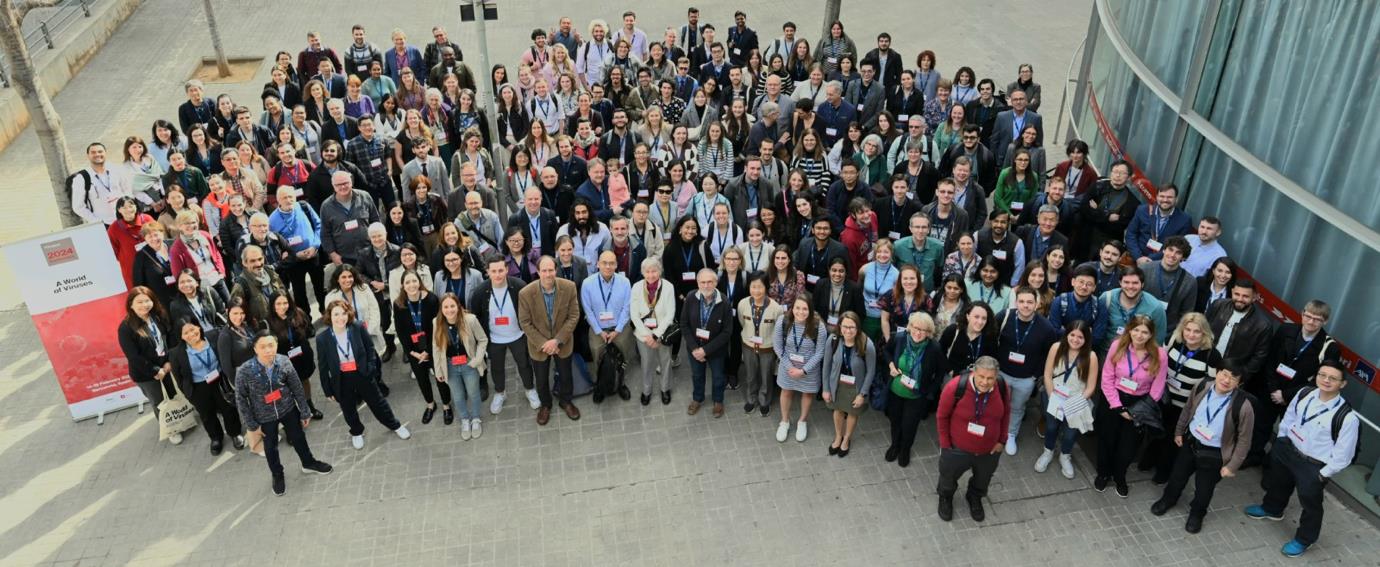
Our thanks go to our sponsors and partnering societies, our Viruses journal and editorial team, our Barcelona colleagues, and the social media, conference and other MDPI teams for making this event a memorable occasion. View the event gallery here.
Upcoming In-Person Event
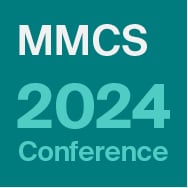
24–26 April, 2024
4th MMCS – Harnessing the Power of New Drug Modalities
Location: Barcelona, Spain
Esteemed speakers at MMCS 2024 include Prof. Arun K. Ghosh, the mind behind the Darunavir molecule, and Prof. Paul Brennan, CSO of Alzheimer's Research UK Oxford Drug Discovery Institute.
Find more upcoming MDPI events here.
Organize Your Event with MDPI’s Sciforum
Sciforum is MDPI’s platform dedicated to the organization of scientific events. In line with our mission to promote science, Sciforum supports scholars, societies, research networks, and universities at all stages of organizing in-person events, virtual events and webinars. Our platforms are efficient, user-friendly, and cost-effective. We handle all steps related to event management. Contact us for details.
Closing Thoughts

Researcher to Reader (R2R) Conference
From 20–21 February 2024, I had the pleasure of attending the Researcher to Reader (R2R) conference in London, which MDPI has proudly sponsored over the years. The conference programme offered a variety of session formats, including workshops, panel discussions, debates, interviews, presentations, and lightning talks, with opportunities to discuss relevant topics.
We take pride in supporting the scientific community, bringing researchers across the world together to network, exchange ideas and share the latest in science and publishing. In 2023, MDPI invested close to 2 million CHF in sponsoring over 2,000 scientific and publishing-related conferences worldwide.
R2R Peer Review Innovations Workshop
I found the R2R conference to be engaging, with the workshops being particularly enjoyable. My colleague Giulia Stefenelli (Chair of Scientific Office Board) and I participated in the “Peer Review Innovations” workshop, which spanned four sessions over the two days. These sessions explored the future of peer review and how we can improve the peer review process for everyone involved. Notably, the large majority of attendees expressed their opinion that peer review, as currently practiced, requires significant improvement. Together, we collaborated on potential immediate and long-term improvements and innovative processes, aiming to create an ecosystem beneficial to all stakeholders by strengthening submission systems with the aim of reducing threats and making authors more responsible for their work. We also discussed the opportunity for academic institutions to better scrutinize the quality of the work produced and submitted to journals.
Our group comprised publishers, software providers, librarians, and more, bringing diverse perspectives to the discussions. These interactions were relevant to MDPI’s ongoing conversations, providing insights to our efforts. The session also made me appreciate that MDPI is doing well, as the group discussions included the subject of various quality checks that we have already embedded in our processes, ensuring that we keep abreast of industry standards.
The need for an optimized system to incentivize the activities of editors and reviewers was also a focus of discussion, as well as the support that reviewers need from publishers via the provision of strong reports through fixed forms, questionnaires and training.
At MDPI, we are currently auditing our reviewer program to improve reviewer recognition, guidelines, and methods for identifying suitable reviewers, while maintaining our commitment to quality and timeliness.
Congratulations to Mark Carden, Conference Director, and the R2R team for organizing a productive and successful event. PS: The break times were greatly appreciated as well!
Chief Executive Officer
MDPI AG
31 January 2024
MDPI Insights: The CEO's Letter #8 - Altmetric and Flat Fee Agreement

Welcome to the MDPI Insights: The CEO's Letter.
In these monthly letters, I will showcase two key aspects of our work at MDPI: our commitment to empowering researchers and our determination to facilitating open scientific exchange.
Opening Thoughts

MDPI and Digital Science Meeting
At MDPI, we are committed to providing our authors with the essential tools to publish, promote, and track their research. In line with this commitment, we have established a longstanding collaboration with Digital Science, a company specializing in research data and analytical insights for the research community. Our collaboration integrates their Altmetric tool, offering us and our authors the ability to track a variety of sources that monitor and report attention surrounding publications.
As part of our collaboration, we recently hosted Cathy Holland, Director of Global Publisher Business Development, and Helen Cooke, Managing Director of Publisher Sales, from Digital Science, at our MDPI headquarters in Basel, Switzerland.

Left to right: Facundo Santomé (Senior Marketing Manager, MDPI), Constanze Shelhorn (Indexing Manager, MDPI), Cathy Holland (Director of Global Publisher Business Development, Digital Science), Helen Cooke (Managing Director of Publisher Sales, Digital Science), and Stefan Tochev (CEO, MDPI) in front of MDPI headquarters in Basel, Switzerland.
During our meeting, we discussed MDPI’s publishing philosophy and explored further avenues for collaboration. We look forward to continuing our partnership with Digital Science, aiming to improve our services yet further and meet the needs of our authors more closely than ever.
What is Altmetric?
You will notice that MDPI articles feature an Altmetric score, a colourful doughnut capturing the score in the upper right corner of the article page. This score represents ‘alternative metrics,’ as distinct from traditional metrics such as Impact Factor, CiteScore, and Scimago Journal Rank.
Altmetrics complement traditional citation-based metrics by capturing online discussions related to a specific research topic. By analyzing both sets of data, we can obtain a comprehensive understanding of the attention a particular research output receives and the sources in which it is mentioned.
“Almetric provides visual insights into where research is being discussed”
Sources Tracked by Altmetric
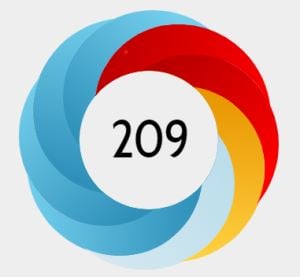
Altmetric badge showing the Altmetric score and colour-coded mention sources.
Altmetric monitors various sources, categorizing them into segments such as policy documents, peer reviews, Wikipedia, news and blogs, and social media, among other sources. Each category is identifiable by a specific colour.
The Altmetric badge provides visual insights into where the research is being discussed. A more colourful badge indicates broader mentions across multiple platforms. Such tracking enables us to gauge the extent of an article’s online dissemination, noting that increased visibility may correlate with higher citation rates.
Read more:
Impactful Research

Ten High-Altmetric Articles Published by MDPI
As at 30 January 2024, Altmetric has tracked 670,500 MDPI research outputs from MDPI, resulting in over 4.3 million mentions. This includes over 71,894 mentions in policy and patents and 294,714 mentions in news and blogs, with some achieving an Altmetric score as high as 28,754.
So, what is a good Altmetric score? There are various ways to put this score into context. You can find out more about the score in context and how to evaluate your work by this means.
Here are ten MDPI papers ranking in the top 5% of all research outputs scored by Altmetric.
|
|
“Accuracy in Wrist-Worn, Sensor-Based Measurements of Heart Rate and Energy Expenditure in a Diverse Cohort” J. Pers. Med. 2017, 7(2), 3; https://doi.org/10.3390/jpm7020003 Altmetric page: https://mdpi.altmetric.com/details/20477344 Altmetric shows that this article appeared in 253 news stories from 209 outlets including Forbes, BBC, and Fox News. |
|
|
“Daylight Saving Time and Acute Myocardial Infarction: A Meta-Analysis” J. Clin. Med. 2019, 8(3), 404; https://doi.org/10.3390/jcm8030404 Altmetric page: https://mdpi.altmetric.com/details/57654628 Altmetric shows that this article appeared in 295 news stories from 207 outlets including Forbes, The Atlantic, and New York Times. |
|
|
“The Preliminary Analysis of Cave Lion Cubs Panthera spelaea (Goldfuss, 1810) from the Permafrost of Siberia” Quaternary 2021, 4(3), 24; https://doi.org/10.3390/quat4030024 Altmetric page: https://mdpi.altmetric.com/details/111086701 Altmetric shows that this article appeared in 182 news stories from 134 outlets including CBC News, CNN, and National Geographic. |
|
|
“Not the Cat’s Meow? The Impact of Posing with Cats on Female Perceptions of Male Dateability” Animals 2020, 10(6), 1007; https://doi.org/10.3390/ani10061007 Altmetric page: https://mdpi.altmetric.com/details/83796184 Altmetric shows that this article appeared in 124 news stories from 98 outlets including VICE, CNN and The Guardian. |
|
|
“Behaviour and Welfare Impacts of Releasing Elephants from Overnight Tethers: A Zimbabwean Case Study” Animals 2022, 12(15), 1933; https://doi.org/10.3390/ani12151933 Altmetric page: https://mdpi.altmetric.com/details/133463915 Altmetric shows that this article appeared in 192 news stories from 186 outlets. |
How do I use altmetrics?
Altmetric Explorer provides a detailed step-by-step guide and instruction video for first-time users of the tool. The guide includes useful diagrams that make it easy to get started.
Sharing Research Online
For research to be tracked across different sources, Altmetric needs a research output with a persistent identifier: a DOI, ISBN, PubMed ID, handle ID, etc. When sharing research, it is important to include a link to the original research output.
|
|
“An Update on Eukaryotic Viruses Revived from Ancient Permafrost” Viruses 2023, 15(2), 564; https://doi.org/10.3390/v15020564 Altmetric page: https://mdpi.altmetric.com/details/142929875 Altmetric shows that this article appeared in 250 news stories from 180 outlets including CTV, Fox News, and CNN. |
|
|
“The Global Problem of Insufficient Sleep and Its Serious Public Health Implications” Healthcare 2019, 7(1), 1; https://doi.org/10.3390/healthcare7010001 Altmetric page: https://mdpi.altmetric.com/details/53406248 Altmetric shows that this article appeared in 252 news stories from 168 outlets including BBC, Harvard Business Review, and Forbes. |
|
|
“A Detailed Review Study on Potential Effects of Microplastics and Additives of Concern on Human Health” Int. J. Environ. Res. Public Health 2020, 17(4), 1212; https://doi.org/10.3390/ijerph17041212 Altmetric page: https://mdpi.altmetric.com/details/86529137 Altmetric shows that this article appeared in 197 news stories from 150 outlets including BBC, The Tribune, and World Economic Forum. |
|
|
“An Empirical Study of Chronic Diseases in the United States: A Visual Analytics Approach to Public Health” Int. J. Environ. Res. Public Health 2018, 15(3), 431; https://doi.org/10.3390/ijerph15030431 Altmetric page: https://mdpi.altmetric.com/details/34714141 Altmetric shows that this article appeared in 232 news stories from 149 outlets including Forbes, New York Times, and Harvard Business Review. |
|
|
“Garden Scraps: Agonistic Interactions between Hedgehogs and Sympatric Mammals in Urban Gardens” Animals 2023, 13(4), 590; https://doi.org/10.3390/ani13040590 Altmetric page: https://mdpi.altmetric.com/details/142934305 Altmetric shows that this article appeared in 172 news stories from 168 outlets including BBC. |
Inside MDPI

MDPI Annual Meeting Celebrations in China
On Thursday 25 January, over 1,300 MDPI colleagues from our two offices in Beijing gathered to kick off MDPI’s traditional ‘Annual Meetings.’ These celebrations take place in MDPI’s offices across China, including Dalian, Tianjin, Wuhan, and Nanjing.
The evenings include performances, informative talks and presentations, awards, and entertainment, providing an ideal platform to recognize our colleagues, celebrate their achievements, and set our sights on the future.
“It is essential that we stay connected and share best practices”

I sent a video congratulating everyone on their work and sharing our vision of building MDPI into the most trusted OA publisher, highlighting the roles each of us has to play in achieving that goal.
Unfortunately I could not join in person, but you may recall my recent trip, when I visited our offices in Beijing and Wuhan, which I look forward to visiting again this year.
Although our headquarters are in Basel, Switzerland, and we are expanding throughout Europe and North America, the majority of MDPI’s workforce is in China and throughout the Asia-Pacific region, including offices in Singapore, Thailand, Japan, and newly opened office in South Korea. It is essential that as a global organization, we stay connected and share best practices in order to grow collectively and continue providing the exceptional service to our authors.
The Annual Meeting is a moment to reflect and enjoy the year’s hard work and dedication.

I extend our best wishes to all for the Chinese New Year (Xīnnián kuàilè)!
Coming Together for Science
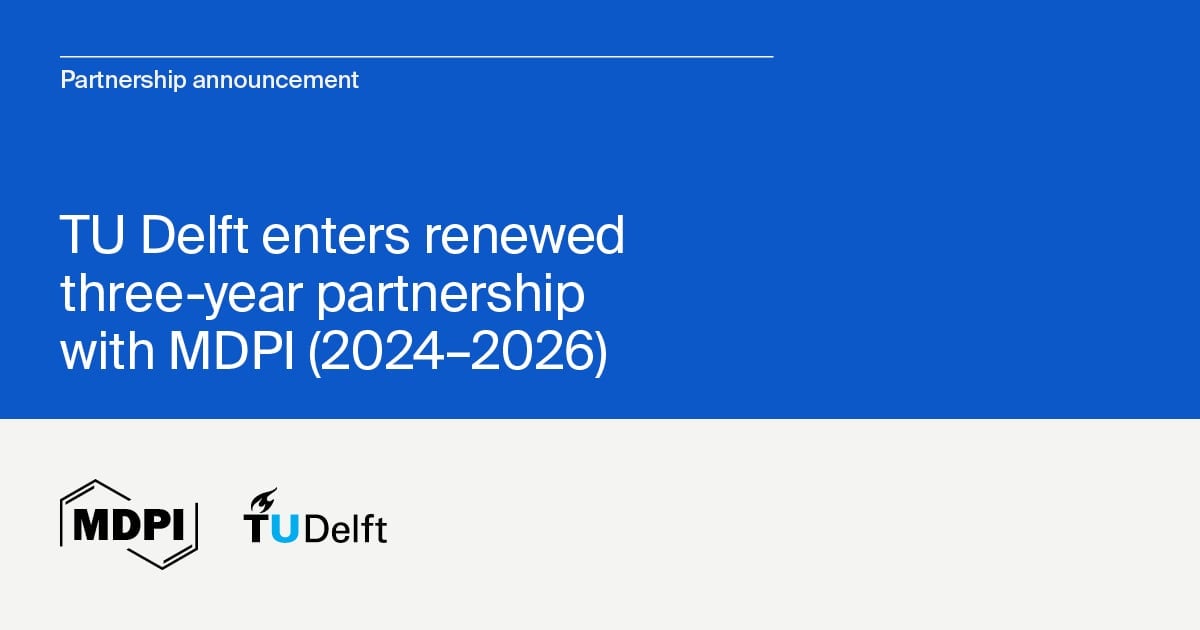
MDPI and TU Delft Adopt Flat Fee Model in Extended Partnership
We are excited to announce a renewed three-year partnership with Delft University of Technology (TU Delft) in the Netherlands. This collaboration introduces a fixed lump-sum fee, covering publishing costs from 2024 to 2026.
“This initiative reflects our dedication to transparent and inclusive publishing”
TU Delft-affiliated authors will enjoy cost-free publishing in any MDPI journal during this period, aligning with our commitment to removing barriers for open access publishing. The agreement supports Plan S compliance and facilitates a seamless publishing process for TU Delft corresponding authors. This initiative reflects our dedication to transparent and inclusive publishing, providing stability and predictability both for authors and for institutions.
For further details on our Institutional Open Access Program (IOAP), please contact us.
Benefits to MDPI’s IOAP
At MDPI we have a long tradition of partnerships, including our Institutional Open Access Program (IOAP). IOAP supports institutions through simplification, access, transparency, APC discounts, and institutional repository deposits. The program simplifies administrative processes, offers central payment, and allows easy opting in and out. Participants gain free access to Susy, MDPI’s online submission system, with extensive article metadata and exportable data. APC discounts and Book Processing Charge discounts are available for affiliated authors. Automated deposits to institutional repositories and streamlined matching of papers to IOAP participants enhance the overall experience.
For further information, see our IOAP FAQ.
Closing Thoughts

Reflections on the 2024 APE Conference
MDPI was proud to co-sponsor the Academic Publishing in Europe (APE) 2024 Conference that took place in Berlin, Germany, from 9–10 January 2024.
The conference theme, ‘Keep the Conversation Going!’, explored the evolving landscape of scholarly communication. APE is one of the key conferences I make a point to attend each year. January offers a valuable opportunity to engage with new contacts, reconnect with familiar faces, and participate in impactful discussions and presentations among professionals, scholars, and practitioners in the field.
“It's fascinating to see how other publishers are leveraging AI”
Highlights
Some of the standout panels for me include: the role of the UN Sustainable Development Goals (SDGs) within the publishing industry. It was encouraging to hear the current status quo, though I was eager also to learn about the exciting projects planned for 2024 and beyond. These will allow us to track progress in subsequent years. At MDPI, we remain committed to promoting Open–Access (OA) content on SDGs through scientific articles and books. Furthermore, we extend our commitment to sustainability by financially supporting researchers through initiatives such as the World Sustainability Award and the Emerging Sustainability Leader Award, as well as waiving the APC for feature papers on each SDG.
In recent years, discussions on AI have become increasingly prominent at such conferences. It’s fascinating to see how other publishers are leveraging AI to meet the evolving needs of their audiences while at the same time using it to safeguard the scientific process. Other engaging panels that I enjoyed included updates on transformation beyond transformative agreements, the principles of lean change, incentive structures related to research integrity, and the panel on reviewer incentives.
“We can share best practices and lessons learned”
Incorporating MDPI’s Insights into Conferences
I must confess that I sometimes feel overlooked when MDPI is not invited to participate in crucial industry discussions. As the leading open access publisher and the third-largest publisher overall, we possess extensive experience in many of these areas and can offer valuable contributions to these discussions. We can share best practices, lessons learned, and our thinking about future trajectories. For instance, in panels discussing reviewer incentives, at MDPI we offer a discount voucher to reviewers for future submissions, reflecting our commitment to fostering a robust peer review process. In 2022 alone, MDPI collected over 1.4 million peer review reports, informing the decision-making processes of our editors. Given our expertise in these areas, it would be natural to include MDPI in such discussions. I therefore extend an invitation to future conference organizers to consider MDPI for speaking engagements and collaborative opportunities.
Chief Executive Officer
MDPI AG
25 January 2024
Acknowledgment of the Reviewers of Bioengineering in 2023
In recognizing the exceptional efforts of our reviewers in 2023, we express our sincere gratitude for upholding the high standards of Bioengineering. Their commitment ensured the rigorous peer review that is integral to quality academic publishing.
In 2023, Bioengineering received 5766 review reports, from 4227 reviewers. This past year, we worked with reviewers from 87 countries and regions, reflecting the diversity in our collaboration with research communities. Their dedication shapes scholarly discourse and advances global research. The editorial team expresses gratitude for the vital role played by each reviewer in the Bioengineering family throughout 2023, and we look forward to their continued support in 2024.
The following are the reviewers who have consented to show their names:
| A. Raja Annamalai | Kinga Turzó |
| Aalap Chokshi | Kishore Bingi |
| Abdelghani Dahou | Klaus Peter Latté |
| Abdolhassan Kazemi | Kok Beng Gan |
| Abdolreza Jamilian | Konstantin Kozlov |
| Abdorreza Mesgar | Konstantin Yarygin |
| Abdul Jatoi | Koyeli Girigoswami |
| Abdullah Amru Indera Luthfi | Krishna Kant |
| Abdulnaser M. Alshoaibi | Krisztina Nikovics |
| Abhishek Jha | Kunal Pal |
| Abraham Pouliakis | Kuntal Maity |
| Abul Doulah | Kuosheng Cheng |
| Adebowale Obalalu | Lan Lin |
| Adel Elamri | Lanju Mei |
| Adel Girgis | Laszlo Csirmaz |
| Adem Ozcelik | Lateef Ahmad |
| Afzal Hussain | Laura Bulgariu |
| Agnishwar Girigoswami | Laura Burattini |
| Agostino Guida | Laura Gastaldi |
| Ahmad Bazli Ramzi | Laurent Dewasme |
| Ahmad Hassanat | Leila Allahqoli |
| Ahmed Abass | Leonardo Pagnotta |
| Ahmed El-Fiqi | Leonid Bystrykh |
| Ahmed El-Shanshory | Leslie Pendrill |
| Ahmed Fatimi | Leticia Xochitl López Martínez |
| Ahsan Sarwar Rana | Lev Kazakovtsev |
| Aike Qiao | Lewis Gladius |
| Ajay Kumar Yagati | Li Wang |
| Ajinkya Pawar | Liana Anicai |
| Akalesh Verma | Liangtao Yang |
| Akira Sakai | Lin Zhang |
| Akmalbek Bobomirzaevich Abdusalomov | Lina Vieira |
| Alaa Adawy | Linda Paternò |
| Alberto Battistel | Lioua Kolsi |
| Alberto Porta | Lisandro Lovisolo |
| Alberto Rodriguez-Archilla | Liudmila Gerasimova-Meigal |
| Aleksander Mendyk | Loganathan Rangasamy |
| Aleš Fidler | Lorenzo Faggioni |
| Alesandr Krasnov | Luca Fredianelli |
| Alessandra Giuliani | Luca Redaelli De Zinis |
| Alessandro Di Rienzo | Lucia Barra |
| Alessio Paladini | Lucia Rocco |
| Alexander Gusev | Luciano Bissolotti |
| Alexander Laemmle | Ludovic Tricoire |
| Alexander Meigal | Luigi Perotti |
| Alexander Moskalensky | Luis Coelho |
| Alexander Netrusov | Luis Dias |
| Alexander Novikov | Luis Mariano Esteban |
| Alexander Panich | Lukas Holzer |
| Alexander Pyatakov | Mabel Noemí Brunotto |
| Alexander S. Machikhin | Maciej Zaborowicz |
| Alexander Shtil | Mahdi Roozbeh |
| Alexandre de Brevern | Mahmoud Elbattah |
| Alexandre Vetcher | Mahmoud Tabrizi |
| Alexandru Lavric | Mahmud Iwan Solihin |
| Alexey Beskopylny | Makoto Nakamura |
| Alexey Ruchay | Malaya Nath |
| Alexey Smolin | Małgorzata Chojak |
| Alfonso Maria Ponsiglione | Manel Santafe |
| Alfred Ankrah | Manoj Sharma |
| Ali Al-juboori | Mansi Gandhi |
| Ali Salehzadeh-Yazdi | Manuel Prado-Velasco |
| Ali Zarrabi | Manuel Rodríguez-Ortega |
| Amar Nath Chatterjee | Manuela List |
| Ami Mehta-Doshi | Maqsood Ahmed Siddiqui |
| Amid Shakeri | Marat Leonidovich Rudakov |
| Amine Khaldi | Marc C. A. Stuart |
| Amir Benzaoui | Marcelo Suzuki |
| Amirmasoud Ahmadi | Marcin Kozuch |
| Amirtharajan Rengarajan | Marco Invernizzi |
| Amit Banerjee | Marco Schieppati |
| Amjad Abu Hasna | Marco Zedda |
| Ammar Saleem | Marcos Brioschi |
| Amr Arafat | Marek Pagáč |
| Amr shehabeldine | Marga López |
| Amritlal Mandal | Margaret Saha |
| Amro Amara | Maria A. Bonifacio |
| Amroune Salah | Maria Botelho |
| Ana Joaquina Perez-Berna | Maria D. Rikkou-Kalourkoti |
| Ana Maria Buzaleh | Maria Federica De Riccardis |
| Ana Rita Caseiro Santos | Maria Giovanna Gandolfi |
| Anatoly Karavaev | Maria Giovanna Scioli |
| André Lopes | Maria Jose De Jesus Valle |
| Andre Luiz Costa | Maria Lepore |
| Andre van Zundert | Maria Luiza Mello |
| Andrea Bagno | Maria Pia Cavatorta |
| Andrea Barucci | Maria Pia Ferraz |
| Andrea Capodaglio | Maria-Elissavet (Mariliza) Nikolaidou |
| Andrea Maria Patelski | Marian Simka |
| Andrea Mastinu | Mariana Domnica Stanciu |
| Andreas G. Tsantes | Mariana Ferdes |
| Andrei Vasile Nastuta | Mariana Floria |
| Andrei Victor Sandu | Marija M. Vuksanović |
| Andrej Savic | Marina Carbone |
| Andres Barajas-Solano | Marina Piscopo |
| Andres-Amador Garcia-Granada | Mario Amatria |
| Andrew J. | Mário Vaz |
| Andrew Kolarik | Marioara Avram |
| Andrey Bogomolov | Marisa Varrenti |
| Andrey Kovalev | Markus Neureiter |
| Andrii Kondratiev | Markus Oertel |
| Andrzej Kasperski | Marta Carvalho |
| Angela De Bonis | Martin Meier |
| Angelo Naselli | Martine Pithioux |
| Anna Kabłak-Ziembicka | Marzia Segù |
| Anna Paradowska-Stolarz | Masashi Mizuguchi |
| Anna Scotto d'Abusco | Massimo Corsalini |
| Anran Ran | Massoud Amini |
| Antonio Di Martino | Mati Pääsuke |
| António Manuel de Amaral Ramos | Matteo Bruno Lodi |
| Antonio Nenna | Matthew Bernards |
| Antreas Kantaros | Maximilian Deußing |
| Anuchit Jitpattanakul | Mayur Virarkar |
| Anurag Satpathy | Md Belal Bin Heyat |
| Anusha Ekanayaka | Md Sofiqul Islam |
| Apostolos Tsolakis | Megat Syahirul Amin Megat Ali |
| Arafa Aly | Mehdi Bahrami |
| Arash Kia | Mehdi Mogharabi-Manzari |
| Arda Isik | Mehran Emadi Andani |
| Arianna Carnevale | Meijuan Chen |
| Arkalgud Ramaprasad | Meir Barak |
| Arnaldo Santos | Mengze Xu |
| Arnulfo Ramos-Jiménez | Michael Arkas |
| Arulselvan Palanisamy | Michael Brimacombe |
| Arup Acharjee | Michael Gray |
| Arvind Negi | Michael Liebman |
| Asmaa Abdella | Michael Shestopalov |
| Ateeq Ur Rehman | Michaela Cellina |
| Athanasios Papadopoulos | Michel Roethlisberger |
| Athina Angelopoulou | Michele Boffano |
| Atkinson Irina | Michitaka Yoshimura |
| Aydi Abdelkarim | Mieszko Wieckiewicz |
| Ayhan Celik | Mikhail Kostik |
| Ayhan Esi | Mikhail Ryazantsev |
| Babak Chehroudi | Milan Poudel |
| Bao Yang | Milan Toma |
| Baolei Guo | Milos Kojic |
| Barbara Jasiewicz | Min Dai |
| Bart Vande Vannet | Ming-Der Lin |
| Bartosz Małkiewicz | Mingjian Shi |
| Basanta Kumar Biswal | Mingzhu Sun |
| Batyrkhan Omarov | Miran Kondrič |
| Bennett Amaechi | Mircea Ioan Popa |
| Beom Sun Chung | Mithun Rudrapal |
| Bernard Hernandez | Mizuho Nishio |
| Bikash Koli Dey | Mohamad Shahgholi |
| Bilal Kirmani | Mohamed Abuzaid |
| Bing Wang | Mohamed Ali |
| Bo Luan | Mohamed Jaber |
| Bogdan Ene-Iordache | Mohamed Trabia |
| Bogdan Gherman | Mohammad Ashfaq |
| Bogdan Istrate | Mohammad Etoom |
| Bogdan Oancea | Mohammad Hossein Moattar |
| Bogdan Socea | Mohammad Reza Daliri |
| Bogdan Tutunaru | Mohammad Rezapour |
| Bogdan Walkowiak | Mohammed Abdullah |
| Bogomir Milojevic | Mohammed Emran |
| Bohan Yin | Mohammed H. Alsharif |
| Bojan Masanovic | mohammed hawash |
| Boris A. Galitsky | Mohammed Salman Shazeeb |
| Boris Dzantiev | Mohammed Shuaib |
| Braden Fleming | Mohammed Zakariah |
| Bruce Milthorpe | Monica Betta |
| Bruno Bonnechère | Mónica Martins |
| Camillo La Mesa | Monika Łopuszańska-Dawid |
| Cândida Malça | Monika Papież |
| Carla Masala | Monika Prakash |
| Carlos A. García-González | Morteza Taheri |
| Carlos Cerdán Santacruz | Mostafa Kamal Masud |
| Carlos F. Geraldes | Muahammad Atiq Ur Rehman |
| Carlos Hall | Mubarak Mustapha |
| Carlos López-de-Celis | Muhammad Akram |
| Carlos Miguel Marto | Muhammad Altaf Khan |
| Carlos Rovere | Muhammad Khalis Abdul Karim |
| Carlos Torres-Torres | Muhammad Sardaraz |
| Carmen Gaidau | Muhammad Shafiq |
| Carmen Hernandez | Muhammad Tariq |
| Carmen Zaharia | Muhammed Yildirim |
| Carson Leung | Muhammet Baykara |
| Catherine Park | Mukesh Meena |
| Cevat Erisken | Munho Ryu |
| Chandra Mishra | Murat Koklu |
| Chang Wei Hsieh | Murni Sarian |
| Chang Won Jeong | Mustafa Bayram |
| Changli Zhao | Mustafa Demirci |
| Changzheng Chen | Myles Jones |
| Chao Wang | Nafisa Gull |
| Chao Zhang | Nagavendra Kommineni |
| Charity Ngoatle | Nahum Rosenberg |
| Cheng Chen | Naiying Mao |
| Cheng Yang | Naji Kharouf |
| Chenzhen Zhang | Nan Yang |
| Cherng-Yuan Lin | Narongchai Autsavapromporn |
| Chetta Massimiliano | Natale Musso |
| Chhavi Sharma | Natalia Chumakova |
| Chiara Martinelli | Nathan K. Evanson |
| Chichun Pan | Neelamadhab Padhy |
| Chih-Kun Hsiao | Nejc Umek |
| Chris Wei Zhou | Nektarios Kalyvas |
| Christian Gernhardt | Nenad Ignjatović |
| Christian Maibohm | Neofytos Komninos |
| Christian Müller | Nianfeng Sun |
| Christie Ying Kei Lung | Nicola Armstrong |
| Christoph Berliner | Nicolas Joudiou |
| Christophe A. Marquette | Nicoletta Cera |
| Christos Papaneophytou | Nicos Maglaveras |
| Christos Rahiotis | Nikita Minaev |
| Cinzia Franchin | Nina Anfinogenova |
| Clare Selden | Nir Erdinest |
| Claudio De Lazzari | Nithesh Naik |
| Colleen M. McDowell | Nitish Nayak |
| Congqiang Zhang | Nizar Faisal Alkayem |
| Constantin Munteanu | Noriko Takegahara |
| Constantinos Koutsojannis | Noureddine Issaoui |
| Cristiana Corsi | Nuno Mendes |
| Cristina Chircov | Oleg Shichalin |
| Cristina Gluhovschi | Olexander Barmak |
| Curtise K. C. Ng | Olga Lyublinskaya |
| Cyrille Blondet | Omid Akhavan |
| Dachang Zhu | Omneya Attallah |
| Dalia Medhat | Onur Güler |
| Dan-Alexandru Szabo | Orion Itzhak |
| Dandan Tu | Oscar de Lucio |
| Daniel Aguado | Otávio Augusto Chaves |
| Daniel Dalla Torre | Othmane Merah |
| Daniel Pozza | Panagiotis Mallis |
| Daniel Torres-Lagares | Pankaj Attri |
| Daniela Opriş-Belinski | Paola Manini |
| Daniele Corbo | Paolo Benna |
| Daniele Panetta | Paolo Boffano |
| Daniele Ugo Tari | Paolo Cavoretto |
| Daniil Bratashov | Paolo Spinnato |
| Danijela Budimir Mršić | Paolo Zaffino |
| Danilo Lofaro | Paris Jafari |
| Danish Javeed | Pascal Pineau |
| Dariusz Mikołajewski | Patricia Godoy |
| Darko Božanić | Patrick Martin |
| Daryoush Shahbazi-Gahrouei | Paul Annus |
| Dave Mangindaan | Paul Soto |
| David Greenhalgh | Paul Sundaram |
| David Lea-Smith | Paula Daza-Navarro |
| Davide Barbagallo | Paulo J. Palma |
| Davide Bizzoca | Paulo Santiago |
| Davide Borroni | Pavel Makarevich |
| Davut Karayel | Pavel Rehak |
| De Gong | Pawan Kumar |
| Debarati Paul | Pedro Gomes |
| Deborah Verran | Pedro Morouço |
| Deepti Shrivastava | Peer Kämmerer |
| De-Li Shi | Perrey Stephane |
| Delly Ramadon | Peter Fennema |
| Dengfeng Li | Peter Gaengler |
| Despina Kalogianni | Peter Liddle |
| Devanand Venkatasubbu Gopinath | Peter Mukli |
| Dhiraj Bhatia | Peter Neubauer |
| Dianbao Zhang | Peter Piko |
| Diego Romano Perinelli | Peter Trosan |
| Dieter Dirksen | Petr Masliukov |
| Dilovan Zebari | Philip Hublitz |
| Dimitrios Tzachanis | Philip Moore |
| Dinesh Veeran Ponnuvelu | Philippe Gorce |
| Dirk Henrich | Pichad Khejornsart |
| Dmitry Gryadunov | Pier Nicola Sergi |
| Dmitry Kiselev | Piero Antonio Zecca |
| Dmitry Markov | Pietro Hiram Guzzi |
| Domenico Spinelli | Ping Wang |
| Dominik Dłuski | Pingfan Hu |
| Domonkos Varga | Piotr Dobrowolski |
| Donatella Delle Cave | Piotr Karauda |
| Dong Zhang | Piotr Kurcok |
| Don-Gey Liu | Piya Temviriyanukul |
| Dongrui Ma | Piyush Baindara |
| Dongwoo Kim | Pradeep Panda |
| Dong-Wook Han | Priti Prasanna Maity |
| Dora Luz Almanza Ojeda | Qaiser Riaz |
| Dragana Gabric | Qi Shao |
| Dragana Zagorac | Qian Ma |
| Drago Beslo | Qian Wang |
| Dragos Apostu | Qiang Peng |
| Dulani Meedeniya | Qianrong Qi |
| Ebrahim Karami | Qiao Lin |
| Ebrahim Kouhsari | Qiguo Rong |
| Ebtesam Al-Suhaimi | Qin Xiang Ng |
| Eduardo Nakano | Qing Feng |
| Ekaterina Naumenko | Qinhe Zhang |
| Elamparuthi Ramasamy | Qiuyun Xu |
| Elena Helerea | Rachid Touzani |
| Elena Salernitano | Rade M. Babić |
| Elena Tchetina | Radian Popescu |
| Eleuterio A. Sánchez Romero | Radu Racovita |
| Elham Asgari | Rafał Bachorz |
| Elisa Belluzzi | Raghvendra Pratap Singh |
| Elisa Viladés | Rahul Mandal |
| Elnaz Pashaei | Rajagopal Maheswar |
| Elsa Chan | Rajamani Devaraj |
| Elsa Marisa Vieira | Rajiv Singla |
| Eman Mehanna | Rajni Verma |
| Emanuela Chiarella | Raluca Nicu |
| Emanuele Piuzzi | Ramasubba Reddy Palem |
| Emanuele Torti | Ramgopal Kashyap |
| Emerson Venancio | Rami Suleiman |
| Enrique Berjano | Rana Youness |
| Enrique Cuan-Urquizo | Ratna Kishore Velamati |
| Enwu Liu | Ravichandran Manickam |
| Erfan Tirkolaee | Ravindra Kumar |
| Eric Chappel | Rayaz A. Malik |
| Eric Fujiwara | Rebekka Heitmar |
| Eric Goulet | Récsán Zsuzsa |
| Eric Ramirez | Reinaldo Rodríguez-Ramos |
| Erik Steen Redeker | Remington L. Nevin |
| Erika de Alvarenga | Renato Melo |
| Erman Çakıt | Reza Razaghi |
| Esra Imamoglu | Ricardo Cartes |
| Eugene Loos | Riccardo Beltrami |
| Eugenio Mattei | Ripon Sarkar |
| Eugenio Vocaturo | Rita Cordeiro |
| Eui Chul Lee | Rob Fowkes |
| Evangelia Sarantopoulou | Robert Friedman |
| Everaldo Silvino dos Santos | Robert W. Caldwell |
| Evgeny Mirkes | Roberto Castiglione |
| Ewa Korzeniewska | Roberto de Fazio |
| Ewa Oledzka | Roberto Gatta |
| Ewa Piątkowska | Rodolfo Reda |
| Fábio Fernandes | Rogerio Buchaim |
| Fábio Lanferdini | Ronald Moore |
| Fabrizio Barberis | Roong Jien Wong |
| Fabrizio Fiori | Roozbeh Abedini-Nassab |
| Facundo Almeraya-Calderón | Rosalinda Inguanta |
| Fahad Ahmad | Roseline Ogundokun |
| Fahim Sufi | Rosella Cataldo |
| Fahmi Khalifa | Rossella Cacciola |
| Faming Wang | Rubén San-Segundo |
| Farhad Ali | Ruchire Eranga Wijesinghe |
| Farkhondeh Asadi | Runwen Yao |
| Fateh Mebarek Oudina | Runze Li |
| Fatemeh Khatami | Rupesh Kumar Chikara |
| Fausta Lui | Ryan Peterson |
| Federico Barrino | Ryota Hosomi |
| Federico Berton | Saadullah Abbasi |
| Federico Solla | Sadaf Bashir Khan |
| Feng Li | Sadiq Abdulhussain |
| Feng Ma | Saeed Roshani |
| Fengjie Zhao | Saima Imran |
| Fengyuan Zhao | Salil Bharany |
| Fernanda Lopes | Salvatore Giordano |
| Fernanda Medeiros Borsagli | Salvatore Saccone |
| Fernanda Mesquita | Saman Parvaneh |
| Fernanda Tonelli | Samet Memiş |
| Fernando Sanchez Lasheras | Samo Fokter |
| Fidelis Ajibade | Samuel Samnick |
| Filipe Pinto | Samuele Sutera |
| Filippo Cademartiri | Samy Sayed |
| Filomena Salazar | Sandeep Kumar Mishra |
| Florian Recker | Sandeep Urandur |
| Francesca Zotti | Sanika Suvarnapathaki |
| Francesco Claps | Sanjay Kumar Singh |
| Franco Zanini | Sara Abdelsalam |
| Frank A. Schildberg | Saravanan Ramiah Shanmugam |
| Frederico Vieira | Sarfaraz Niazi |
| Fredrik Huss | Satoshi Yamaguchi |
| G.P Ramesh | Satyendra Tiwary |
| Gábor Hornyánszky | Saurabh Sharma |
| Gabriel-Ionut Plavan | Savvas Lampridis |
| Gador Canton | Sebastian Glowinski |
| Gagandeep Singh | Sebastiano Cicco |
| Galina Kurlyandskaya | Sergey Kolotilov |
| Gang Chen | Sergey Tkachev |
| Gang Li | Sergii Babichev |
| Gary Garcia Molina | Serkan Yílmaz |
| Gema Navarrete | Sezer Okay |
| Gemma Palazzolo | Shahjada Selim |
| Genki Yoshikawa | Shahrokh Hatefi |
| George Fragulis | Shahzadi Tayyaba |
| George Livanos | Shaik Gouse Peera |
| George Manis | Shailendra Maurya |
| George Paraskevas | Shaobin Wang |
| George Thompson | Shaode Yu |
| George Verros | Shao-Yi Hsia |
| Georgios Panos | Shenghong He |
| Ghada Atteia Allah | Shichao Ding |
| Gian Andrea Pelliccioni | Shigeki Kamitani |
| Gianandrea Pasquinelli | Shikha Sharma |
| Giancarlo Condello | Shilin Liu |
| Gilbert Lim | Shireesh Srivastava |
| Giner Alor-Hernández | Shiv Dutt Purohit |
| Giou-Teng Yiang | Shiwei Liu |
| Giovanni Buzzaccarini | Shoushui Wei |
| Giovanni Diraco | Simon Fox |
| Giovanni Levi | Simona Ascanelli |
| Giulia Festa | Singara Singh Kasana |
| Giuseppe Brunetti | Siu Hong Dexter Wong |
| Giuseppe Cirillo | Sivakumar Nuvvula |
| Giuseppe Milone | Sivarao Subramonian |
| Giuseppe Trusso Sfrazzetto | Sivasakthivel Ramkumar |
| Glauco Chisci | Siyuan Zhao |
| Gloria Cerasela Crisan | Sladjana Stajčić |
| Gopichandh Danala | Slawomir Jakiela |
| Gordana Wozniak Knopp | Sohail Mumtaz |
| Gordon Alderink | Solomon Viswas Raja |
| Gregory Chagnon | Somdutt Mujwar |
| Grzegorz Cieślar | Somenath Chakraborty |
| Grzegorz Sobota | Sonia Ronchey |
| Grzegorz Zieliński | Sophie Alvarez |
| Guankui Wang | Sorin J. Brull |
| Gurkan Bayar | Sorina Dinescu |
| Gurmail Paddan | Sotiria Vrouva |
| Gustavo Costa | Sotirios Kalfas |
| Gustavo Fernandes | Soumya Basu |
| Haidi Ibrahim | Soumya Nayak |
| Haishan Zeng | Soumya Srivastava |
| Haiyan Yang | Sourav Banerjee |
| Hajime Hajime | Srijit Das |
| Hamed Barabadi | Srikanth Prabhu |
| Hamed Hatami-Marbini | Stefan Fischer |
| Hamed Nosrati | Stefan Kranz |
| Hamed Taherdoost | Stefano Di Paolo |
| Hamid Ghasemi | Stefano Restaino |
| Hamid Tebyaniyan | Stephan Havemann |
| Hanrui Wang | Steven Murray |
| Hanseob Jeong | Sudarsu Venkata Ramanaiah |
| Hans-Jürgen Federsel | Sudi Patel |
| Hao Wu | Sulev Kõks |
| Hao Zhang | Suman Lama |
| Haradhan Kolya | Suparerk Janjarasjitt |
| Harikumar Rajaguru | Supriyo Ray |
| Hariprasath Manoharan | Surendra Sarsaiya |
| Hartmut F. Witte | Suresh Anand Sadananthan |
| Hasan Zulfiqar | Syed Furqan Qadri |
| Haw-Ming Huang | Syed Muzahir Abbas |
| Hayes Phil | Syoichi Tashiro |
| He Zhang | Tadeusz Mikolajczyk |
| Hemali Rathnayake | Taha Mastura Mohammad |
| Hemangi Bhonsle | Tahereh Jafary |
| Heng Bo Jiang | Taj Mohammad |
| Henrique Neiva | Takahiro Wada |
| Henry Atkinson | Takaomi Arai |
| Hervé Reychler | Takeharu Tsuge |
| Hesham Moustafa | Takuya Koie |
| Hiam Alquran | Tamás Haidegger |
| Hisao Haniu | Taner Sar |
| Hong Tang | Taner Tuncer |
| Hongqing Yu | Tania Colasanti |
| Hongyu Ren | Tarek Mohamed |
| Hooman Shafaee | Tarik Kivrak |
| Hossam Nabwey | Tatiana Rakitina |
| Huihua Yuan | Teruya Komatsu |
| Hunter Moseley | Thach Nguyen |
| Hyeuknam Kwon | Thanavel Rajangam |
| Iacopo Cappellini | Thayne Kowalski |
| Ignacio Bosch | Thierry Ribeiro |
| Igor Gruic | Thomas Boland |
| Igor Vujović | Thomas Dippong |
| Ihsan Hamawand | Thomas Lindner |
| Ilaria Cacciotti | Thorsten Kuczius |
| Ilaria Girolami | Tiago Ribeiro |
| Ilaria Marcantoni | Tianming Zhao |
| Ilya Klabukov | Tirath Raj |
| Iman Yazdi | Tohru Yamada |
| Imtiaz Ahmad | Tomasz Marciniak |
| Inbarasan Muniraj | Tomasz Szymborski |
| Inderbir Singh | Tommaso Greco |
| Indrajeet Kumar | Tomohiro Torii |
| Ines Aguinaga-Ontoso | Tomomi Yamazaki |
| Ioan Petean | Tongran Qin |
| Ioan Tudosa | Torbjörn Ledin |
| Ioannis Kosmas | Torsten Malm |
| Ioannis Tsoulos | Toshiyo Tamura |
| Ion Cosmin Puia | Tugay Ayasan |
| Ionel Alexandru Checherita | U. Vijayalakshmi |
| Ionut Schiopu | Ugo D'Amora |
| Iqram Hussain | Umapathi Reddicherla |
| Irena Jekova | Usman Ghafoor |
| Irene Buj-Corral | Vadim Elagin |
| Irene Chiesa | Vaidotas Marozas |
| Irfan Khan | Valeria Allizond |
| Irina Le-Deygen | Vangelis Daskalakis |
| Irina Negut | Vangelis Karalis |
| Ismail Ben Abdallah | Vasil Garamus |
| Ismail Fidan | Vassilios Papadopoulos |
| Ítala Marx | Venkata Krishna Kowthavarapu |
| Iurii Krak | Venugopal Rao Soma |
| Ivan Bratchenko | Vesna Mandic-Markovic |
| Ivan Cuk | Viacheslav Voronin |
| Ivan Ivanov | Vikram Dalal |
| Ivo Dumic-Cule | Viktoriya Davydova |
| Ivona Bago | Vinay Shivanna |
| Jabar H. Yousif | Vinay Vakharia |
| Jacopo Lamanna | Vincenzo Taormina |
| Jaganmay Sarkar | Vineet Kumar |
| Jaison Jeevanandam | Vinoth Kumar |
| Jakub Szabelski | Vítor Carvalho |
| James Chow | Vittorio Rampa |
| James Chung-Wai Cheung | Vivek Chavda |
| Jamshed Iqbal | Vladimir Galaktionov |
| Jamshid Piri | Voula Georgopoulos |
| Jan Gajewski | Vrinda Gote |
| Janusz Kluczynski | Vyacheslav Ryabov |
| Jaroslava Halper | Wacław Kuś |
| Javad Hassannataj Joloudari | Wansu Park |
| Javed Ali Khan | Warawut Chaiwong |
| Javier Martin | Weerawat Limroongreungrat |
| Jayshri Kulkarni | Wei Feng |
| Jean-Michel Guenet | Wei Yan |
| Jeanne Wilson-Rawls | Weihua Huang |
| Jeffrey Jones | Weihua Yang |
| Jennifer Gubitosa | Weiping Li |
| Jeong Yeon Kim | Weizhen Hou |
| Jesús Pastor | Wen Shi |
| Jeyasakthy Saniasiaya | Wenbin Shi |
| Ji Young Cho | Wendy Bollag |
| Jia Wen | Wenguang Yang |
| Jiacheng Zhang | Wenji Piao |
| Jianan Zhao | Wenjie Zhou |
| Jianhua Wu | Wenjing Ma |
| Jianqi Wang | Wenqiang Wei |
| Jie Wang | William Berg |
| Jie Zhang | Wim Buijs |
| Jihoon Moon | Wito Richter |
| Jiling Feng | Wi-Young So |
| Jilong Liu | Woo-Jong Kim |
| Jimmy T. Efird | Xavier Navarro |
| Jin Li | Xiaobo Li |
| Jingan Li | Xiaobo Wu |
| Jingjing Yang | Xiaodong Zhou |
| Jingyi Xue | Xiaohu Zhao |
| Jin-Hyuck Park | Xiaolei Peng |
| Jinjun Xia | Xiaoqiang Zhang |
| Jinkun Geng | Xiaowei Zhang |
| Jinlong Liu | Xiaoyang Guan |
| Jintamai Suwanprateeb | Xiaoyang Liu |
| Jinwei Xie | Xin Guo |
| Jinze Xu | Xin Song |
| Joao Carmo | Xin Tong |
| João Marcelo Teixeira | Xingchun Gao |
| João Paulo Tribst | Xinjun Feng |
| Joaquim Carreras | Xinyu Ling |
| Jochen Salber | Xuan Mu |
| Jochen Schmid | Xudong Ji |
| Jochen Winter | Xuejun Liu |
| John A. StCyr | Xueming Zhang |
| John Ayeelyan | Xueqin Gao |
| John M. Perry | Yang Zhang |
| John Nicholson | Yanru Lou |
| John Stanford | Yaoxiang Li |
| Jolanta Szymańska | Yasemin M. Akay |
| Jonas Kurniawan | Yekta Can |
| Joni H. Ylostalo | Yeliz Karaca |
| Jorge Arede | Yeong-Min Yoo |
| Jorge Grasa | Yi Wang |
| Jorge Ordonez-Llanos | Yi Zhang |
| José Francisco González Prieto | Yide Zhang |
| Jose L. Martinez-de-Juan | Yifan Ma |
| Josefa Gonzalez-Santos | Yi-Lang Chen |
| Joseph Christakiran Moses | Yin Zhao |
| Jovan Gardasevic | Ying Yang |
| Jozsef Sarosi | Yingji Mao |
| Juan Manuel Belda Lois | Yinglei Song |
| Juan Manuel Gutiérrez | Yizhang Wu |
| Juan Shan | Yoo Tanabe |
| Juern W. P. Schmelzer | Yosra Soltan |
| Julius Höhne | Young Hye Song |
| Juliusz Huber | Young Zoon Kim |
| Jun Long Lim | Yu Knyazev |
| Junaidi Khotib | Yu Zhang |
| Jung Woo Sohn | Yuan-Yang Cheng |
| Juris Burlakovs | Yu-Chi Lee |
| Juvenal Rodriguez | Yufang Shen |
| Jwayoung Kim | Yukun Yang |
| Kai Bin Liew | Yulia Alexandrovskaya |
| Kai Li | Yun Ling |
| Kailing Yu | Yunn-Hwa Ma |
| Kamalan Kirubaharan Amirtharaj Mosas | Yuxin Tong |
| Kamil Reza Khondakar | Yves Bayon |
| Kamyar Khoshnevisan | Zaihua Duan |
| Karel Kostev | Zapryana Denkova |
| Kari Stone | Zhaoxi Sun |
| Karim Kriaa | Zhen Wang |
| Katarzyna Krukiewicz | Zhengwei Huang |
| Katrin Bauer | Zhengzhi Mu |
| Kavitha Subash | Zhengzhong Tan |
| Kayode Oshinubi | Zhibin Zhou |
| Ke Cheng | Zhiguo He |
| Keigi Fujiwara | Zhijie Wang |
| Kelin Du | Zhiping Liu |
| Kelly De Jesus | ZhuangJian Liu |
| Kenichi Kimura | Zhuhuang Zhou |
| Kenji Hayashida | Zhuofu Liu |
| Kenneth Lim | Zia Ullah Arif |
| Kevin Dzobo | Zihao Ding |
| Khaled Aboshanab | Zihao Ou |
| Khalid Raza | Zizhu Zhang |
| Kijoon Lee | Zsolt Piróth |
| Kim Jin-Chul | Zygmunt Pojda |
2 January 2024
MDPI Insights: The CEO's Letter #7 - Nobel Laureates Entrust MDPI with Their Research

Welcome to the MDPI Insights: The CEO's Letter.
In these monthly letters, I will showcase two key aspects of our work at MDPI: our commitment to empowering researchers and our determination to facilitating open scientific exchange.
Opening Thoughts
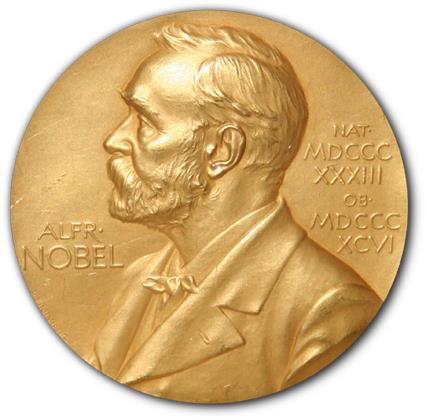
Nobel Prize Laureates Entrust MDPI with Their Research
The Nobel Prize stands as a hallmark of distinction, honouring ground-breaking research across disciplines. Annually, the Nobel Prizes are awarded in six categories: Physics, Chemistry, Medicine or Physiology, Literature, Peace, and Economic Sciences.
Through the years, renowned scholars have entrusted MDPI with their work. As at December 2023, 26 Nobel laureates have contributed to more than 75 articles across 25 MDPI journals, including: Antibiotics, Applied Sciences, Biology, Biomedicines, Cancers, Catalysts, Cells, Crystals, Entropy, Games, IJMS, Life, Materials, Micromachines, Molecules, Pharmaceuticals, Pharmaceutics, Photonics, Quantum Beam Science, Remote Sensing, Sensors, Solids, Universe, Vaccines, and Viruses.
The best of the best trust us with their work.
Nobel Prize Laureates Who Have Published with MDPI
We are proud to list the names of Pierre Agostini, Hiroshi Amano, Werner Arber, Aaron Ciechanover, Robert H. Grubbs, Oliver Hart, Gerard ‘t Hooft, Michael Houghton, Harald zur Hausen, Katalin Karikó, Jean-Marie Lehn, Gérard Mourou, Ferid Murad, Shuji Nakamura, William Nordhaus, Kostya S. Novoselov, Giorgio Parisi, Charles M. Rice, Alvin E. Roth, Donna Strickland, K. Barry Sharpless, George F. Smoot, Anne L’Huillier, Drew Weissman, Kurt Wüthrich, Ada Yonath.
The privilege of hosting such contributors resonates deeply with our editorial teams. For instance, in this interview, the Editor-in-Chief (EiC) of Universe speaks on the significance of publishing a paper by Nobel laureate Gerard ’t Hooft within the journal.
2023 Nobel Prize Winners Published by MDPI

Nobel Prize Winners, 2023: Katalin Karikó, Drew Weissman, Anne L’Huillier (Ill. Niklas Elmehed © Nobel Prize Outreach)
Three laureates from the 2023 Nobel Prize cohort have trusted MDPI as their publishing platform. Notably, in a 2022 Pharmaceutics paper, molecular biologist Katalin Karikó and her team presented a methodology for evaluating mRNA capping efficiency, pivotal for therapeutic applications. Pharmaceutics had previously dedicated a Special Issue to “mRNA Therapeutics: A Themed Issue in Honor of Professor Katalin Karikó”, spotlighting ten articles from August 2021 to February 2022.
In the journal Vaccines, Professor Drew Weissman, collaborating with scholars from Pennsylvania University and George Mason University, contributed an influential review titled “Nanomaterial Delivery Systems for mRNA Vaccines”. His collaborative efforts spanned five papers across MDPI journals between 2021 and 2023.
Furthermore, Anne L'Huillier of Lund University, only the fifth female recipient of the Physics Prize, co-authored an article in Applied Sciences focusing on "Advanced EUV and X-Ray Optics". Similarly, Pierre Agostini, an Emeritus Professor from Ohio State University, co-authored an article featured in the special issue "Attosecond Science and Technology: Principles and Applications".
We extend heartfelt congratulations to all Nobel Prize laureates and express sincere gratitude for their confidence in MDPI as a platform for their scholarly contributions.
Read more:
Impactful Research

MDPI Journals Newly Indexed in 2023
The aim of indexing is to enhance the quality and credibility of published research, ensuring that researchers access the most credible resources available. While the principle behind citation indexing is straightforward, it remains one of the most dependable methods for tracking an idea's evolution across various scientific disciplines.
Throughout the year, MDPI works to expand the reach of our publications across premier multidisciplinary databases like Web of Science, Scopus, EBSCO, and ProQuest. This initiative is spearheaded by MDPI's Indexing team, under the leadership of Dr. Constanze Schelhorn.
In 2023, MDPI achieved 54 new acceptances in Scopus, 29 in Web of Science, 52 in EBSCO, and 83 in DOAJ: Directory of Open Access Journals.
The team prioritizes ensuring that our journals feature in numerous specialized databases, including PMC, PubMed, MEDLINE, Inspec, CAS, and FSTA, among others. Currently, MDPI collaborates with over 65 renowned international databases, consistently enhancing our database affiliations annually.
MDPI’s journals are indexed in all major global databases.
Furthermore, we collaborate with universities and government organizations to list our journals in country-specific ranking lists and relevant institutional repositories. This ensures compliance with requirements often set by funders or institutions for authors to publish in specific journals.
Web of Science Adds 24 MDPI Journals to Emerging Sources Citation Index (ESCI)
Clarivate recently analysed MDPI’s new journals, resulting in 24 journals, mainly established in 2020, being added to the ESCI in November and December 2023. Additionally, five journals passed this assessment earlier in the year. For a complete list of our journals in Web of Science, refer here. Journals in the ESCI meet 24 quality criteria, ensuring editorial rigor. They may be considered for inclusion in broader indices like the Science Citation Index Expanded (SCIE), the Social Sciences Citation Index (SSCI), or the Arts and Humanities Citation Index (AHCI), based on four impact criteria.
Read more:
Inside MDPI

MDPI Appoints New Chief Operating Officer (COO)

Alistair Freeland returned to MDPI and assumed the role of Chief Operating Officer in November 2023, a position he previously held from 2013 to 2019. He succeeds Dr. Yu Lin, who will remain a member of MDPI’s Board of Directors, overseeing significant financial decisions for the company. I would like to express my sincere thanks to Dr. Yu Lin for his service as COO.
Alistair brings extensive experience not only in scholarly publishing but also in technology and business management. Prior to rejoining MDPI, he was associated with SIX Group, the entity responsible for Switzerland's financial market infrastructure. There, he played a pivotal role in developing the blockchain-based platform SDX (SIX Digital Exchange), which has gained traction among major Swiss banks and the Swiss National Bank.
As COO, Alistair will collaborate with the MDPI management team to improve the practices and services we offer to scholarly communities. I am pleased to welcome Alistair back to MDPI and look forward to his contributions going forward.
Coming Together for Science

MDPI’s 2024 In-Person Academic Events Schedule
MDPI's Conference Team is dedicated to organizing and hosting in-person academic events across Europe, Asia-Pacific, and North America. We recognize conferences as invaluable platforms for scientific collaboration, scholarly exchange, discussions on contemporary topics, networking, and forging collaborations.
Here's a glimpse of the notable events we currently have scheduled for 2024:
|
|
14–16 February, 2024 |
|
|
24–26 April, 2024 |
|
|
28–31 May, 2024 |
|
|
1–4 August, 2024 |
Upcoming events with details to be announced:
- September 2024, Materials 2024 – Basel, Switzerland
- 19–21 September 2024, International Conference on Nanomaterials Sciences 2024 – Beijing, China
- October 2024, ncRNA 2024 – Basel, Switzerland
- November 2024, Pharmaceuticals 2024 – Barcelona, Spain
- 22–26 November 2024, International Conference on Science of Electronics – Wuhan, China
- Stay tuned for more details on the Sustainable Publishing Forum 2024.
Click here for all upcoming MDPI events.
Organize Your Event with MDPI’s Sciforum
Sciforum is MDPI’s platform dedicated to the organization of scientific events. In line with our mission to promote science, Sciforum supports scholars, societies, research networks, and universities at all stages of organizing in-person events, virtual events and webinars. Our platforms are efficient, user-friendly, and cost-effective. We handle all steps related to event management. Contact us for details.
Closing Thoughts

Reflecting on 2023 and Looking Ahead to 2024
As we approach 2024, I reflect on the incredible journey we’ve had together at MDPI this year. The past 12 months have been marked by ambitious projects and initiatives to improve our internal processes, and a commitment to continue delivering top-notch services to our stakeholders. I’d like to thank each and every one of our staff members for contributing to the positive experiences our stakeholders have reported in our surveys. Your dedication to speed, efficiency, and effective communication with our stakeholders is very much recognized and appreciated.
Becoming a stronger organisation
While we have encountered challenges in 2023, it’s important to understand that these are a part of our growth process. Difficulties provide us with opportunities to reflect, address problems at their roots, and ultimately evolve into a stronger organization. Our stakeholders expect us to overcome tough times, and it’s an expectation that we have for ourselves.
I extend my sincere appreciation to every MDPI employee, from our editorial office and IT department to marketing, indexing, IOAP, societies, Scientific Office board, products, production, conferences, finance, operations, admin, and beyond. To our newest team members, a warm welcome; to our longstanding colleagues, your dedication is invaluable.
“I am committed to taking MDPI to a new level of excellence.”
Interacting with many of you during my visits to our offices and representing MDPI at external events has been a personal highlight. I am deeply grateful to Dr. Lin for entrusting me with the role of CEO of MDPI. Looking forward, I am committed to working closely with our management team to lead MDPI and take it to a new level of excellence, aiming to establish it as the most trusted publisher in open access worldwide. This is a collective endeavour, with each of us shaping MDPI’s reputation. I therefore encourage us to take pride in our work, as it represents not only our craft but also MDPI as a whole.
Accountability and communication
As we look forward to 2024, there’s a lot to be excited about. Together, we’ll navigate challenges, seize growth opportunities, and refine our practices. To solidify MDPI’s position as the premier open access publisher globally, we must bolster accountability, improve stakeholder communication, share MDPI’s best practices, champion the open access philosophy, and educate stakeholders about our mission, methodologies, and motivations.
Thank you for engaging with the CEO Letter over the past six months of 2023. I will continue to release this newsletter as a method of sharing the great work being done at MDPI. Please feel free to connect directly with any insights or questions.
Here’s to a joyous and prosperous 2024!
Chief Executive Officer
MDPI AG
30 November 2023
MDPI Insights: The CEO's Letter #6 - MDPI Spain Summit and ResearchGate

Welcome to the MDPI Insights: The CEO's Letter.
In these monthly letters, I will showcase two key aspects of our work at MDPI: our commitment to empowering researchers and our determination to facilitating open scientific exchange.
Opening Thoughts

MDPI Spain Summit

Stefan Tochev (CEO, MDPI) gives the opening speech at the MDPI Spain Summit.
On Friday 10 November 2023 I was in Barcelona, Spain, to deliver the opening presentation and participate in a panel at MDPI’s Spain Summit, a two-day event, inspired by our salon events in China.
With 16 Editors-in-Chief (EiCs) and 20 Editorial Board Members (EBMs) in attendance, the event, organized by our conference team and Barcelona office, featured presentations on open access (OA), MDPI, and publishing market trends in Spain.
The event provided a great opportunity to engage with stakeholders from various MDPI journals, including Nutrients, Vaccines, Buildings, IJMS, and others. We were able to gather feedback and have open conversations around manuscript quality, the peer-review process, and journal development, as well as accreditation agencies.
The main objective of this Summit was to bring together Editors representing MDPI journals across various disciplines within Spanish universities and research centers, primarily from the Barcelona area. The aim was to facilitate an open and fruitful discussion regarding the development of their journals, the future of OA in Spain, and to provide meaningful interactions and networking opportunities.
Connecting with Editorial Board Members

Stefan Tochev in conversation with Summit participants: "Our EBMs are passionate about the journals they serve."
Interacting with our EBMs in person provides a valuable opportunity to show how important it is to us to connect with them, hear their perspectives on their journals and learn more about their own experience collaborating with MDPI.
From my conversations, it was clear that our EBMs are passionate about the journals they serve. I know the advice they provide may sometimes involve just small tweaks, but these can lead to important improvements. As the saying goes, small hinges swing open big doors.
As at November 2023, MDPI has over 6,300 EBMs affiliated with Spanish institutions, with more than 30 of them serving as EiCs or section EiCs. Furthermore, over 68,000 Spanish scholars have contributed as reviewers in MDPI journals.
Open Access in Spain
In 2023, Spain implemented legislation mandating immediate OA for all publicly funded research, aligning with the EU’s Plan S initiative to expedite the transition to OA. The Spanish government also approved a four-year, €23.8 million annual budget for the first national OA strategy, aiming to make publicly funded research freely accessible upon publication. This strategy aims to strengthen the quality and transparency of research in Spain, and to help promote movement towards a digital, low-carbon economy.
For further details of Spain's OA policy and the history of government mandates, click here.
Spain has already seen a notable decline in subscription-only articles, decreasing by 62% over a 10-year period, while gold OA increased by 42%. Green OA slightly decreased, suggesting a shift towards publishing in gold OA journals rather than traditional subscription-based ones. Here are some statistics from Scopus.
A big thank-you to the various MDPI teams, including our conference team and the Barcelona office, for organizing this very successful event!
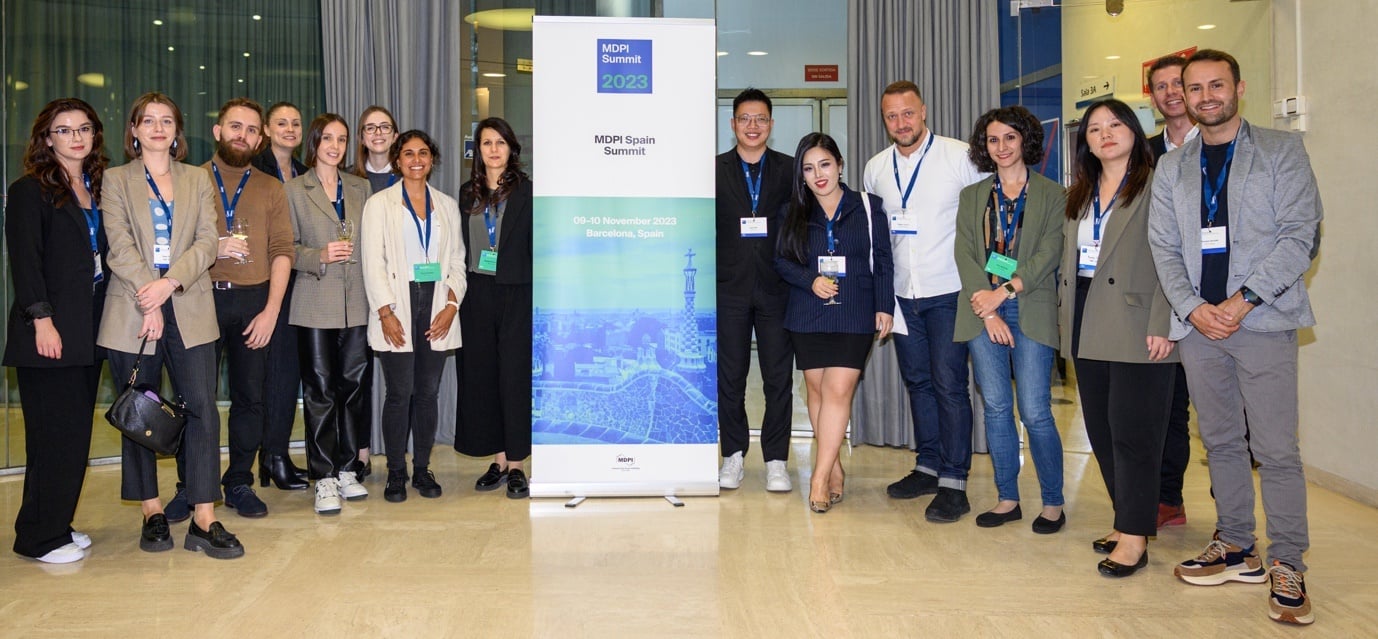
MDPI colleagues from various offices gathered to host and support the first MDPI Spain Summit, in Barcelona, Spain.
I think this type of gathering has the potential to become an annual event in various locations. For example, Manchester could be an option, as we have over 30 EiCs and over 3,000 EBMs in the UK, a top market for MDPI that publishes high-quality research.
Impactful Research

769 Editorial Board Members of MDPI Journals Recognized as Highly Cited Researchers in 2023
Congratulations to our 769 Editorial Board Members from 40 countries/territories who have been awarded Highly Cited Researcher status for 2023 by Clarivate. This recognition is based on their outstanding scientific research contributions and significant influence in various fields, as evidenced by Web of Science data.
Click here to view the full list of 769 Editorial Board Members.
Clarivate's Highly Cited ResearchersTM list identifies individuals with exceptional impact in scientific and social science domains over the past decade. Their papers rank in the top 1% of citations in 21 fields analysed in ‘Essential Science Indicators,’ showcasing their substantial influence.
This year, 7,125 Highly Cited Researcher 2023 designations were issued to 6,849 individuals from 67 countries, representing just 1 in 1,000 researchers worldwide.
These researchers demonstrate exceptional influence, representing a small fraction of contributors pushing the boundaries of knowledge, contributing to global well-being, sustainability, and security.
Congratulations to these scholars for their remarkable achievement: we are honoured to have them on board with our journals!
Inside MDPI

Corporate Marketing and Communications Strategy Session

Members of MDPI’s Corporate Marketing & Communications team.
For the past few years, I have led the Corporate Marketing & Communications department in our annual strategy session.
This typically involves 2–3 days of focused sessions covering key topics including budgeting, hiring targets, campaign reviews, and planning for the upcoming year, department strategy, and structure.
We are constantly exploring ways to optimize the Corporate Marketing & Communications department to support MDPI’s primary objectives and better convey the MDPI story while serving the scholarly community.
The strategy session also serves as a team-building activity, during which the team voted on bowling!
Strategy Session
In this strategy session, we looked at how to align our teams in order to better streamline our content with our campaigns, build a dedicated marketing team to strategically support our core MDPI products, expand our communications teams and functionalities to focus on company-critical campaigns and press releases, align our new brand design system with our marketing initiatives, set up a community and engagement team to support various teams with their outreach and communication efforts, and increase our use of data in the evaluation of campaign performance.
To grow in these areas, we will be hiring for various positions, including those of Public Relations Manager, Communications Manager, Internal Communications Manager, Campaign Manager, Marketing Associate, and Editorial Engagement Manager.
I am grateful for the way our Corporate Marketing & Communications department has grown and gelled over the years, and I look forward to supporting the department teams and their ideas for the future.
Coming Together for Science

ResearchGate and MDPI Partner to Boost the Visibility of Open Access Content through Journal Home

Stefan Tochev (CEO, MDPI) and Sören Hofmayer (Co-Founder and Chief Strategy Officer, ResearchGate) meet in Berlin, Germany to take their ongoing discussion further.
When I assumed the role of CEO at MDPI, my primary focus was to initiate the building of essential partnerships and collaborations within our industry. After all, I am a firm believer in achieving our goals by helping others achieve theirs and focusing on co-opetition wherever there is an opportunity. I first touched on the notion of co-opetition in MDPI Insights: The CEO's Letter #3, particularly when discussing collaborations with Elsevier.
In light of this, Sören Hofmayer (Co-Founder and Chief Strategy Officer at ResearchGate) and I connected recently to continue a discussion that had been ongoing for months. I was quickly brought up to speed and felt there was an opportunity for MDPI journals to pilot the Journal Home service that ResearchGate had launched. This would provide a new way for MDPI to engage with authors and readers and amplify the visibility of our journals.
While I receive many offers and opportunities for discussions with vendors, I am a firm believer that timing is everything, and in this case, the time for us is now. Sören and I met in person during my recent visit to Berlin and decided to proceed with piloting ten MDPI journals with the Journal Home service.
The press release below provides further details.
Press Release: Berlin (Germany) and Basel (Switzerland), 15 November 2023
ResearchGate, the professional network for researchers, and MDPI, the largest open access publisher in the world and a pioneer in open access publishing, today announced a partnership that will see ten of MDPI’s open access journals benefit from an enhanced presence on ResearchGate through its innovative Journal Home offering.
This new partnership will expand the reach and visibility of MDPI’s participating flagship journals with ResearchGate’s highly relevant community of more than 25 million researchers globally.
Around 210,000 version-of-record articles from these 10 titles will be readily available on ResearchGate, including the full archive material and all new articles as they are published. These journals also benefit from enhanced brand visibility, with dedicated journal profiles, prominent representation on all associated article pages and all relevant touchpoints across the ResearchGate network – keeping the journals top-of-mind with their reader and author audiences. All articles covered by the new partnership will automatically be added to the authors’ publication records in ResearchGate. This not only reduces MDPI authors’ needs for direct management but also offers them valuable insights into the impact of their work, including data about readership and citations.
Closing Thoughts

November is Men’s Health Awareness Month

Stefan Tochev (CEO, MDPI) listening to music as he writes at a coffee shop in Basel, Switzerland.
November is dedicated to raising awareness of various men’s health issues. I have been fortunate to have positive male role models in my life, and I strive to share my experiences with others.
I used to take part in Movember, growing my moustache throughout November to raise awareness and funds and to help “change the face of men’s health.” With male family and friends impacted by physical and mental health issues, I have recently become more interested in men’s overall well-being.
Men often face stigma involving the perceived need always to be strong and have things figured out. Recently, I’ve had meaningful conversations with male friends and colleagues about issues we rarely discuss, and it was a positive experience.
Various factors impact men’s health and well-being, all too easily leading to risky health behaviours including a lack of health awareness, poor health education, and negative, culturally induced, behaviour patterns in our work and personal lives. I hope we can break down these barriers in our work environment.
Healthy men help build healthy families and a healthy society
Men are less likely than women to seek help with their physical and mental health struggles. This is a reminder to prioritize your overall well-being. I hope that as men, we will continue to open up to one another, becoming vulnerable in order to share what we are going through. By sharing and by supporting each other, we can learn and grow together. You are not alone, and when you fall, you can still get up and stand tall.
From one broski to another, you are loved and appreciated. I hope this mindset carries into December and beyond.
Mindfulness
Our content team recently released a handful of articles on mindfulness, a practice that I believe provides a good opportunity for stress release and self-reflection:
Chief Executive Officer
MDPI AG
21 November 2023
769 Editorial Board Members of MDPI Journals Achieve Highly Cited Researcher Recognition in 2023

We extend our sincere congratulations to the 769 Editorial Board Members of our journals – from 40 different countries/territories – who have been recognized as Highly Cited Researchers for the year 2023 by Clarivate. They are being recognized for their high-quality scientific research achievements and outstanding contributions to their professional fields, as indicated by Web of Science data.
Clarivate's annual list of Highly Cited ResearchersTM identifies the most highly cited scientists for the past decade who stand out for their significant and broad influence in various scientific and social science domains. Their impactful papers are among the top 1 per cent in the citation distribution of one or more of 21 fields analyzed in the "Essential Science Indicators", distinguishing them as hugely influential among their peers.
This year, 7,125 Highly Cited Researcher 2023 designations were issued to 6,849 individuals from 67 countries, representing just 1 in 1,000 researchers worldwide.
This means that these researchers have demonstrated an incredible level of significant and broad influence in their chosen field or fields over the last decade. They represent a small fraction of the researcher population whose contributions disproportionately push the boundaries of knowledge, enhancing global well-being, sustainability, and security.
Congratulations to the scholars for their noteworthy achievement – we are honored to have them on board with our journals!
|
Abate, Antonio |
Jaiswal, Amit K. |
Shen, Zexiang |














